brooklands bulletin







The Grand Tour’s Abbie Eaton drives Kay Petre’s record-breaking Delage

Brake components

Clutch & Gearbox
Cooling & Fuelling
Electrical


Engine & Mechanical

Steering & Suspension
Moss began supplying sports car parts in 1948, now benefitting from decades of experience, we are one of the world’s oldest and largest sports car parts and accessories specialists.
Today, our mission is to keep the great marques alive and well by supplying parts and accessories of the highest standard. We offer friendly, professional and knowledgeable service and hold a vast number of parts in stock, available from our branches or online backed by fast, reliable delivery worldwide.
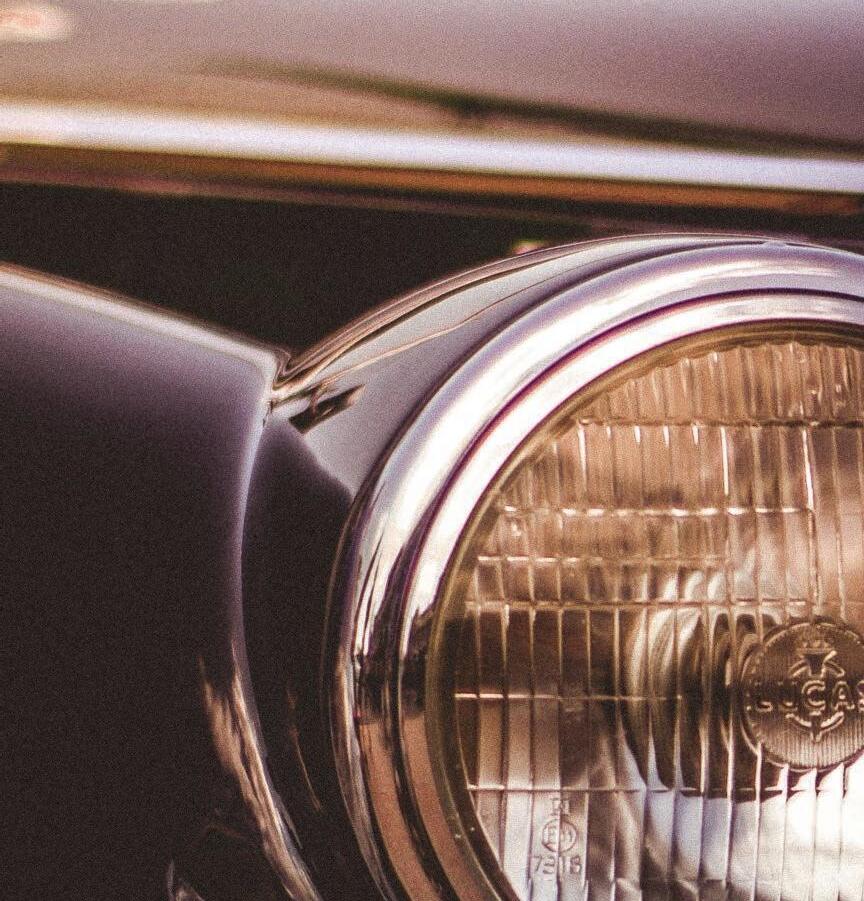
Specialising in Austin-Healey, Classic Mini, Jaguar, Mazda MX-5, MG, Morris and Triumph.



You’ll notice a lot about television coverage at Brooklands in this issue. As well as filming of the Netflix series The Crown using Concorde as a backdrop, there is also the story of how the forthcoming series about Brooklands was filmed by Middlechild Productions.

It’s fascinating to see behind the scenes and learn how much work goes into producing a television series. A huge effort is required so we can sit back and enjoy the results from the comfort of our armchairs. Of course, this reflects the work that goes on at Brooklands to keep the Museum and collections in the best possible shape for visitors, so a huge thank you to all of the Volunteers and staff who contribute so much.
Another piece of the television series filming jigsaw came together when Abbie Eaton, who is more used to driving supercars on The Grand Tour, got behind the wheel of Kay Petre’s Delage. As Anna Jackson portrays so well, Abbie is a hugely talented driver and took on the challenge of a pre-war racing car with gusto like so many other women racing drivers have throughout Brooklands’ history.


As we contemplate 2021, there is much to look forward to with these television series. In the meantime, if you cannot wait for your silver screen fix of Brooklands, there’s plenty to watch thanks to the efforts of the team behind Members.tv. Have a happy, safe Christmas and New Year.
Alisdair SuttieEditor
Brooklands Bulletin


Become
Brooklands Members is the official support organisation for Brooklands Museum and is dedicated to raising funds for the preservation of the historic Brooklands site.







Members receive the Bulletin six times per year and enjoy free admission to the Museum, except when major events are taking place, in which case additional charges may apply. Club Level Members have access to the Clubhouse Bar on Thursday, Friday and Sunday lunchtimes.
For full details of membership benefits, contact the Members Administrator, Sarah Dover 01932 857381 ext 226; or wwwbrooklandsmembers.co.uk where you can find the latest news on Brooklands.

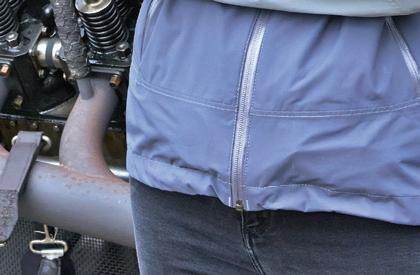




Brooklands Museum’s Concorde is one of the stars of the Netflix series The Crown. The iconic aircraft features as a backdrop in two episodes of the critically acclaimed series and they are available to watch now on Netflix.
Emma Corrin, who plays Princess Diana, is seen in one scene boarding Concorde. In another, she is filmed sitting in the aircraft ready to fly to the USA. The filming took place in March 2020.


The scenes depict Princess Diana’s first official trip to New
York without Prince Charles in 1989. Keen viewers will be able to see the Brooklands Concorde in episodes 9 and 10.
Brooklands has also been used recently to film segments for BBC News and BBC Radio about electric vehicles in the wake of the government’s announce to end sales of petrol and diesel cars from 2030. There is also a a new series Secrets of the Transport Museum about the work of staff and Volunteers at Brooklands Museum that will air on the Yesterday channel in early 2021. To find out more about this, see pages 16 and 24 of this issue.

It wouldn’t be New Year’s Day without a gathering at Brooklands and we are excited to be running a new, COVID-safe event on 1-2 January, 2021.
Our New Year’s Classics Parade will take place over two days and see 50 classic cars and motorbikes on display. There’s also a People’s Choice Concours competition, with the chance to win a Brooklands prize at the end of the event.
The Members’ Bar will be open for pre-booked, single-household tables for Club Members only. The Brooklands Restaurant will be open for all Members. Tables must be pre-booked by emailing: hospitality@brooklandsmuseum.com. There will also be plenty of food and refreshment stalls around the site.

The Museum’s exhibitions and activities will be fully open on both days, so it is guaranteed to be a great day out for all the family. Check the event page on the website for more information, to reserve your ticket and to apply to take part in the Classics Parade.
Please note the event schedule above was correct at the time of going to print. Brooklands Museum complies with current government restrictions under Tier 2; however, this is subject to change. Only pre-registered cars will be allowed to participate in the Classics Parade. Admission is strictly from 9.30am for all Members except for the owners of the demonstration cars. All parking, including Members’ classic vehicles, must be in the visitor car park.
Sam HartOctober and November have brought some excellent news for Brooklands Museum on the fundraising front. In October, a grant of £950,000 was awarded from the Cultural Recovery Fund, through Arts Council England, to help the Museum meet its unavoidable expenses through the winter when income is much lower than normal because of Covid-19. It was one of the largest grants to a museum from this fund and it is good to see Brooklands’ national and regional significance being recognised in this way.
In November, there was further good news with a grant of £30,000 from BAE Systems in recognition of the financial impact that Covid has had on the Museum. The Museum also received a grant of £4000 from Cargill to support its work in encouraging young people’s interest in science, technology, engineering and maths.
Tamalie Newbery



An exciting tribute to the life and achievements of Sir Stirling Moss is set to take place at Brooklands on Sunday 23 May. Sir Stirling was the original President of the Brooklands Trust Members and this new event will celebrate his career by bringing together a collection of his racing cars.
Organised by the Talks Team, the cars that have already been confirmed include Moss’s 1952 Formula 2 HWM and 1958 Vanwall. There are also several Rob Walker Racing Team Grand Prix cars set to appear, such as the Ferguson P99 FWD, the Walker Climax, and the Ferrari 250 GT that Moss drove to victory in the 1961 TT.


Another car due to appear is the Lotus 18 Climax that Moss drove to victory in the 1961 Monaco Grand Prix. Sir Stirling described this as ‘probably my greatest drive in a Formula 1 race.’
The Talks Team is working to bring more cars to the event, as well as many of the people who knew Sir Stirling throughout his long career. The team would also welcome any news of cars or people connected to Moss interested in appearing at the event.

More details of this very special tribute will be confirmed closer to the event.

The Museum has been placed under Tier 2 restrictions as of 3 December, following the end of the second coronavirus lockdown. It is disappointing, but we need to remember that strictly following Tier 2 requirements is the only way we can safely enjoy our visit and protect others. Tamalie and her team have been working hard planning for re-opening and you will find information to help you plan and arrange your visit for the New Year’s Classics Parade on page 4.
Your Committee has continued to function through the last nine months. Our primary aim has been to support the Museum and keep Members engaged and informed, using whatever channels are available to us. Brooklands Members TV has taken over our programme of talks, and the Bulletin and e-newsletter have continued uninterrupted, and we have significantly increased our social media output. We are already looking forward to 2021 and David Norfolk is leading on a fundraising draw, hopefully to be launched in the spring, replacing what would have been the 2020 Christmas Draw.
Last year, the 2019 Christmas Draw raised a large sum to contribute to the remodelling and refurbishment of the Clubhouse reception area, including provision for a lift between the ground floor and Members’ Bar. Subsequently, your Committee voted to add money from our reserves to the funds already raised and we were optimistic the project could be completed this year.
This project required additional significant contributions from Museum funds and a grant from Elmbridge Council. Following the closure of the Museum in March, all spending on projects was suspended so available funds could be directed to ensure the Museum could survive. Since then, the Museum has successfully bid for a loan and grants to continue to operate during this challenging time. However, even taking those into account, it will not be possible to reinstate the refurbishment until the future financial position is much clearer.
Brooklands has added to its Grand Prix story with the addition of a Mercedes-Benz EQ Formula E racing car. The all-electric EQ Silver Arrow 01 was kindly presented by Ian James, Team Principal of the Mercedes-Benz EQ Formula E Team.

The full-size replica of the EQ Silver Arrow O1 now sits alongside other historic racing cars in the Brooklands Museum Grand Prix exhibition. These cars include the 1926 Delage 15-S8 and 1960 Cooper Climax T51, and the cars provide a timeline of racing development from the very first British Grand Prix held at Brooklands in 1926.
Ian James said: ‘To see our Silver Arrow 01 here in the Museum is a great honour for us. This race car opened up a new chapter in the long and successful history of Mercedes-Benz Motorsport. After all, the first Mercedes-Benz was a race car. And with this one, we were able to celebrate the first fully-electric race-win.’
Alex Patterson, Director of Collections, Interpretation and Heritage at Brooklands Museum said: ‘We are thrilled to have the Mercedes-Benz EQ Silver Arrow 01 coming to Brooklands Museum. This important loan will bring our story of Grand Prix up to date, encouraging our visitors of all ages to think about the future of motorsport and is an opportunity for us to show how Brooklands’ legacy of competition driving innovation is still relevant today.’
Katharine AllenAt our last meeting, your Committee agreed to ring-fence all the funds raised for the refurbishment project until the Museum can confirm it is able to go ahead. We anticipate that a decision on the project will be made by July 2021 at the latest. I will ensure you are kept informed of developments, as I know the provision of a lift will be particularly appreciated by Members who are either disabled or not as nimble on their feet as they once were.
developments, as I know the provision of a lift or
In the last edition, I announced that Julian Temple had been nominated for Honorary Membership in recognition of his service to the Museum. Julian is delighted at the award and we look forward to celebrating with him when we can do so. At the beginning of 2020, we voted unanimously also to award Honorary Membership to Robert Hall, founder member of Brooklands Trust Members and our former Vice Chairman. Robert has been involved with the Museum for nearly 30 years as a fund raiser, through our predecessor Friends organisation, and he was the publisher of the Bulletin for almost a decade. We kept the award secret from Robert, hoping to surprise him with a special event later this year. As with so many plans, coronavirus intervened, so we decided to let him know of the award now, but we are planning a celebratory event as soon as possible. In my letter to Robert informing him of the award, I said: ‘I can think of nobody that deserves Honorary Membership more than you.’ A sentiment I’m sure you all share.
I close by thanking you all for staying with us as Members throughout this difficult period. When your renewal invitation arrives, I hope you will again renew as your continued membership has never been more vital to the Museum and its future. This will be a different Christmas for most of us, but I hope you will enjoy it nevertheless. On behalf of the Committee, I send you our very best wishes and look forward to seeing you in 2021.
Neil Baileyand Race Track Revival project and opened in 2017. It provides excellent facilities for the apprenticeship programme and is being enhanced with an additional fit-out during December.
Through the autumn, Brooklands has been getting ready to welcome its first cohort apprentices to the Museum when Heritage Skills Academy opens its new base in the workshop under the Flight Shed in January. This important new partnership puts Brooklands at the heart of ensuring the skills needed to restore and maintain classic and vintage vehicles are preserved and transferred to the next generation of enthusiasts who want to turn their passion into a career.
The Flight Shed workshop was purpose-built as part of the Aircraft Factory
Of course, the Museum’s own Volunteers and staff need somewhere to continue to work on the Collection. So, the Fire Test Chamber workshop is being refitted to provide a shared space for the different teams to work, including a longawaited upgrade of the electricity supply to the building.
While some compromise is involved to move into the smaller space, it is well worth it to have the Museum being used to develop and promote such important skills in vehicle restoration. By the end of the year, there will be apprentices studying at the Museum almost every week.
 Tamalie Newbery
Tamalie Newbery
Mission Motorsport visited Brooklands Museum in October with Billy Monger, the double amputee and young racing driver who has proved such an inspiration to many different people.

Mission Motorsport were delighted to have the chance to bring some of the former members of the armed services who they support to Brooklands, some of whom had not had the opportunity to get out since the beginning of lockdown in March.
You may have seen Brian at Brooklands with his video camera recording anything that caught his eye, but less well known was his photography. Using Kodachrome film, Brian captured many Grand Prix and sports car races from the 1950s to the 1980s. The spectacular results can be seen in the recently published Palawan Press book Racing Through Europe
Many will be saddened to hear of the death Brian Joscelyne, aged 86, who was a former Brooklands Society Committee member and Aston Martin Owners Club stalwart. The consummate enthusiast, Brian’s earliest motorsport memories were of Brooklands and he remembered seeing the Fiat 500 race reported recently in the Bulletin.


Competing first in Aston Martins, he then went on to win his class in the 1971 JCB British Historic series in an ex-Stirling Moss Maserati Birdcage. He competed three times in the Le Mans 24 Hours, on the last occasion in 1979 as a team-mate of Pink Floyd drummer Nick Mason and became a Life Member of the BRDC.
Member Colin Weeks was inspired by the Barnato-Hassan Special in the SeptemberOctober issue of the Bulletin to search out this image. It was taken by Colin’s father-inlaw, Tom Higginson, who was a Brooklands Society Member and worked in the Bentley pit. Colin wonders if any Member can help identify the race and date this photograph was taken, which is now part of the Colin John Weeks Family Educational Trust.
On a personal note, it was Brian who helped publish my writing and photographs in Brooklands, AMOC and other publications. Brian always encouraged others rather than promoting his own achievements. His knowledge was encyclopaedic and time in his company was always entertaining and fun.
To make a donation to either of the charities nominated by Brian’s family, the Braintree Public Gardens and The Friends of Braintree District Museum, or receive details of the hoped-for memorial service in the New Year, please contact me on: garethdtarr@gmail.com
Gareth TarrAfter a long period of restoration work, the repainting of the Vickers Vanguard has been completed, with only the tail section remaining to be finished in 2021.
The scaffolding was due to be dismantled on 7-8 December, revealing this historic aircraft and looking smarter than it has done for years. As soon as funds allow, similar work will begin on other aircraft in the collection, including the Omani VC10.

It is 80 years since the invention of Miss Shilling’s Orifice, which cured a temporary engine stall in the Rolls-Royce Merlin engine. The cure was invented by Beatrice Shilling, who was awarded a Gold Star for lapping Brooklands at more than 100mph on her Norton 500.
Shilling solved the Merlin V12 engine’s ‘fluff’ with a restrictor, or orifice plate, fitted in the fuel line. The modification became known as Miss Shilling’s Orifice and prevented the momentary hesitation when the carburettor jets were thrown to the top of the float chamber as the aircraft entered a steep dive.
PBIS specialises in classic car insurance, as well as insurance for other collectable classic vehicles. We have been arranging insurance for your classics for over 30 years, so we know what is important to you.
Most of our classic policies include free agreed valuations, roadside assistance and recovery within UK/EU, limited mileage options and discounts for multiple car ownership.
ask us today about our classic car and bike insurance cover.

If you are interested in selling your car or motorcycle and are looking for a prompt, hassle-free cash buyer! I am always very keen to add to my current stock, so please feel free to contact me for a no obligation discussion about your vehicle.
I am particularly interested in purchasing prestige, sports, classic, vintage, racing and competition cars and motorcycles, as well as any interesting or unusual models.

Complete collections purchased and all conditions considered, from barnfinds to concours. I will travel any distance for the right vehicle/s, and discretion is always assured. I am a cash buyer not an agent.
If you are looking for a specific vehicle then please also get in contact as I may have or could source what you are looking for?
Unit 6, Studley Court, Guildford Road, Chobham, Surrey GU24 8EB
Unit 6, Studley Court, Guildford Road, Chobham, Surrey GU24 8EB
Tel: 01483 722 923
• web: www.dclass.co.uk

Tel: 01483 722 923 • web: www.dclass.co.uk

email: dclassautomotive@hotmail.co.uk
email: info@dclass.co.uk
D:class automotive @dclassauto @dclassauto
d:class automotive specialise in full interior management and restoration of all classic cars. Our knowledge is second to none in supplying period correct carpets, leather or vinyl.




We are very well known and respected in our field of expertise for such marques as Mercedes Benz, BMW, Ferrari, Rolls Royce and Porsche.
All our work is carried out in-house by trained trimmers with vast years of experience and all works come complete with our full workmanship guarantee. d:class have carried out work for customers worldwide and we are happy to work with any possible logistics required for shipping of parts or cars and this is a true testament to the craftmanship and attention to detail that we put into our work. Our quality of work speaks for itself.
We can repair single damaged areas only without having to go to the expense of replacing a whole cover. The common problem of worn bolsters can be solved within a couple of hours work, replacing the worn cloth, velour, tex or leather panel. Another common fault is split stitching, often seen on the newer model of cars. This again can be repaired as a whilst you wait service. We specialise in warranty work for many manufacturers for the likes of McLaren, Lamborghini, Jaguar, BMW, Mercedes and Ferrari to name a few.
d:class can offer for all makes of car a full upgrade from cloth to leather. This will be done to OEM spec ensuring that it is finished using original patterns, perforations styles and colours. We use only high graded leather with exact grains to match factory finishes and all work is carried out in house. We do not use off the shelf kits and all our work carries a 3-year guarantee.
Alternatively, if you prefer you can overhaul your interior with a completely new and unique finish. Using the brightest leathers on the market or designing your own custom bespoke design on our state-ofthe-art CNC stitch, embroidery and perforation machine. If you can think it, we can create it.
Many unique and award-winning interiors have been produced and restored by d:class and once they have rolled out of our workshops they can be seen nationally and internationally across, not only our own social media but many social media influencers and renown publications.
A full hood fitting service is available in house for a wide range of vehicle manufacturers, we specialise in classic Mercedes hoods. All our hoods come with a 1-year guarantee and are available in a wide range of colours to suit. We can supply and fit OEM where available or aftermarket hoods.

Many convertible owners experience the common issue of the deterioration, discolouration and eventual cracking of the perspex rear screens, within the workshop we can carry out a replacement service of this issue to most vehicles with the exact thickness perspex required.
We are located in Surrey, 15 minutes from junction 10 or 11 of the M25 and from the A3. Collection can be arranged of your vehicle depending on distance.

I am writing as we are getting ready to open the Museum again on 3 December, after the November lockdown. Once again, staff and Volunteers are pulling out all the stops to make sure everything is ready for visitors and Members, this time with a festive twist in the run up to Christmas. It’s exciting getting ready to open the doors again and welcome you all back.
2020 has been a year unlike any other and I couldn’t have imagined that Brooklands Museum would see so much unexpected change. There have undoubtedly been dark moments, but there are many silver linings to appreciate. We can certainly see the sun coming out as we look ahead to 2021. With a vaccine on the cards, we expect to be able to bring back our fantastic events programme, better than ever, as we celebrate 30 years since Brooklands Museum opened and 95 years since the first ever British Grand Prix was held on our site.
The challenges of 2020 brought to light the tremendous passion there is for Brooklands. The immediate and generous response of Members, Volunteers and others to our #LoveBrooklands appeal was so valuable and appreciated, as has been the generosity of every Member who has renewed as normal, knowing the Museum needed their support even when closed. The warm messages that accompanied many of the donations showed us how much Brooklands and Brooklands Museum means to you.
Over the summer and into autumn, your support was matched by significant grants totalling more than £1.2 million from the Cultural Recovery Fund distributed by Arts Council England, the National Lottery Heritage Fund, BAE Systems and others. The scale of these grants shows the high regard in which Brooklands is held by these national organisations.

Despite the difficulties this year, Brooklands Museum forged important new partnerships for its future, in particular the apprenticeship programme with Heritage Skills Academy and the loan of a Formula E car by Mercedes, now on display in the Grand Prix exhibition. The Museum has starred in The Crown, Good
Having returned from storage at Bicester, investigation revealed the Merryweather Fire Tender has had work completed to the engine and gearbox. There’s also been attention to the braking system with new brake shoes and cylinders all round. With a recharged battery and a good slurp of fresh fuel, the engine quickly started and ran well.
Driving the vehicle around the Museum showed it pulls well through the gears. Double de-clutching is required, which is a given with vehicles of this age when changing gears. However, there is some concern as to the efficiency of the brakes that may be due to the use of harder brake shoe material which needs time to bed in.
After filling the onboard water tank, the engine’s power takeoff was engaged to drive the pump. Following a quick repair to the hose reel, the system worked with good pressure. The extra-large hoses, which are fitted to the sides of the vehicle and draw water from a local source such as a village pond, are with the vehicle including the wicker basket filter that prevents unwanted objects being sucked in. Unfortunately, there are no other handheld hoses with this vehicle.

We have yet to drive the vehicle with a full tank of water, which should be an interesting experience. However, being an older
Morning Britain, a David Walliams drama that will air over Christmas, BBC News and much more taking place on the site. There’s also our own 10-part series coming out on the Yesterday channel next year. Our finances remain fragile, but we have a way through now to a stronger future. As we look further ahead to 2022 and 2023, we can expect to be ‘motoring’ again, and we are planning now for the improvements we want to make to the Museum when the time comes. We have appointed renowned architects Purcell to create a masterplan for the site and to develop in detail the first delivery element of that plan focused on the motoring village, ready for us to begin fundraising in earnest in 2022.
Please do come and visit over Christmas and the New Year, and we wish you and your family and friends much happiness for 2021.
Tamalie Newberyvehicle, asbestos materials were incorporated in its construction and some of these areas have been identified. It has been decided that to comply with the current health and safety regulations, the vehicle should not be used until the asbestos has been professionally sealed or removed.
 Malcolm Day
Malcolm Day
Visitors to the Museum may have noticed the Alvis sitting rather forlornly in the Dunlop Mac workshop. What started off as a quick visit to adjust the brakes ended up as a major woodwork project. We knew the car had suffered from woodworm in the past. What wasn’t known was the little blighters were quietly munching their way through the entire car.
Initially, we were concerned the plywood panels forming the boot floor and bulkhead between it and the cockpit were badly perforated. When we returned after the first lockdown, the surfaces that we had swept and vacuumed were once again covered in a fine white powder, which we now know to be ‘frass’. This is the excrement of the woodworm left as they munch their way through the wood.
What we had assumed was a historical problem turned out to be a much more
urgent one. Agreement was reached with the Curatorial Team that we would take out all the loose panels and treat the affected surfaces with museum-grade insecticide. Once this was done and the seats were removed, the true scale of the problem was revealed. The panels were peppered with tiny holes and as soon as any pressure was applied to the surface, the panels crumbled.
As ever, when working with historic items, care was taken to conserve material that was capable of being saved. However, this is a car that needs to be maintained in a safe, drivable condition and it was therefore inevitable we would have to replace other parts. The team decided to replace the bulkhead, boot floor and some floorboards. Having admitted to a past life building and refurbishing wooden boats, I found myself being volunteered for the job.
By this time, word had reached the TV crew that a new project was starting and they decided it would make interesting viewing. Who would imagine, they said, that a car could have floorboards just like a house and they could suffer from wood worm?
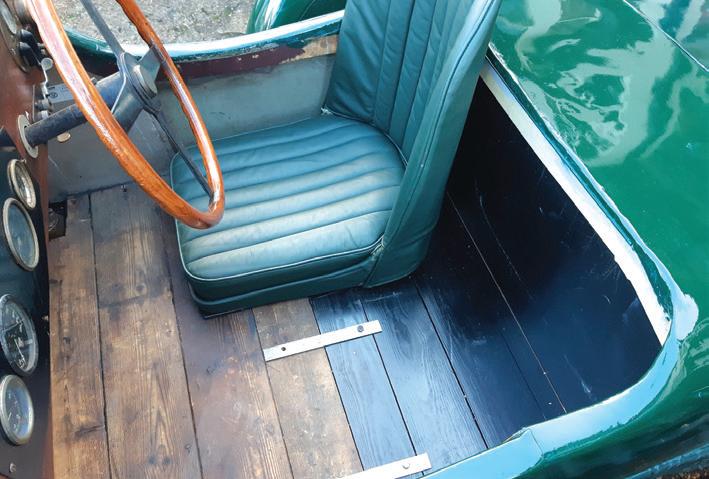
As was the custom in its day, the body of the Alvis was built from a lightweight wooden frame and clad in thin aluminium panels. Over the course of about 10 weeks, I carefully eased the aluminium panels away from the wooden framework and painstakingly recreated new pieces of wood to replace them. My thanks go to Debbie Crawt for assisting with the woodwork and John Phillips for applying paint to the areas of metal that we had disturbed.
The Museum’s Alex Patterson met me in front of the cameras for a handover, after which he proceeded to drive round to the Finishing Straight and do a few laps. I’m pleased to report that the car behaved and Alex coped well with the pedal layout where the accelerator is in the middle and the brake pedal on the right.
All the new wood has been treated with water resistant wood preserver and the remaining pieces of the old frame have been sprayed with insecticide. We’ll be watching closely for woodworm and be ready to zap them if any appear.
 Chris Bound
Chris Bound
to replace the pistons, piston rings and timing chain, and fit a good second-hand set of valves and springs. The crankshaft and main bearings were left undisturbed. Replacement parts were ordered from Ian Harris of Morris Spares, who was very helpful throughout.
The valve seats were recessed and pitted, so they had to be recut. Valves and springs were then refitted and tappet clearances set. The new pistons were bolted up to con rods and fitted from the bottom of the engine, pushed through to stand proud of the cylinder head. The rings were then fitted to the pistons and the pistons reintroduced to the bores.
after applying sealant and the sump bolted back in place.
After removing the Morris 8’s engine, we cleaned the accumulated oil and dirt from the block and sump. Next, the sump and tappet cover were unbolted and sludge-like black treacle was cleaned out. An engine stand provided by one of the volunteers made this work easier.
Both pistons and rings had broken up but the cylinder bores were only lightly marked and showing some signs of water leakage, while the big end bearings were in reasonable condition. It was decided
The old rusty studs were extracted with a removal tool, loaned by one of the Motoring Team Volunteers. Before fitting the new studs, the threads in the block were treated with Fernox Leak Sealant to ensure no more water got into the cylinders. After applying grease to both surfaces of the new head gasket, it was eased over the studs, followed by the cylinder head. The new nuts were then tightened following the manufacturer’s recommended sequence and torque setting. Similarly, the new sump gasket was fitted
The finishing touch was a coat of black heat-resistant paint. Now the engine was lifted back into the car using a crane and half a dozen volunteers, some assisting and others providing advice! The front engine and gearbox mounts were aligned, as well as the propshaft flexible coupling. Then, the starter motor was fitted, as well as the distributor, manifold, carburettor and exhaust. Finally, the electrics and battery were reconnected. Oils were topped up, the radiator filled with water, and with some fuel she was ready to go. While the mechanical work proceeded, other volunteers had cleaned and rustproofed the engine bay, as well as reviving the patina on the bodywork.

The engine was very tight and it was felt that a tow start was the best option, allowing us to get oil pressure up and then starting on the move. With the help of the whole team, the engine fired up to our cheers and was indeed very tight. The tick-over was readjusted to a normal setting over the course of the next 10 minutes of running. It now performs very smoothly, but will need careful running in.
Tony Bantick
R.S.WILLIAMS Limited are Aston Martin specialists, offering in-house machining; manufacture; engine building (including our famous upgrades); worldwide parts distribution and workshops for service, repair, upgrade and preparation of your car to unparalleled standards. Offering award winning restorations and full race preparation and support - Making ownership a pleasure since 1968.
One of only 118 LHD VB6B engined cars. 2016 and 2018 Mille Miglia finisher. 2017 and 2019 Tulpenrally (Tulip rally) finisher. RS Williams mechanical rebuild in 2014 for £42,000. Engine rebuild in 2016 for 49,000. Offered fully mechanically prepared by RS Williams for 2021 Mille Miglia or similar event. Perhaps the finest unrestored example available.
A magnificent DB4 Series IV benefitting from a complete RS Williams body-off restoration costing in excess of £350,000. Two year restoration from October 2017 completed in October 2019 with only 600 miles covered since. California Sage with Fawn interior. Original SS engine upgrade to 4.7ltr. Superb in every way.



Superb DB5 benefiting from single family ownership for over 40 years. Original Goodwood Green with black Connolly hide. A fastidious history file with over 30 expired MOT’s. Undergoing full body off restoration to our ultimate RSW specification. One of the finest DB5’s in the world upon completion.
Stunning DB4 in dark blue with red Connolly hide. Maintenance, service and restoration history from the past 45yrs. RS Williams maintained last 15yrs. Expenditure in excess of £100k including engine upgrade to 4.7ltr in 2010 – under 5,000 miles covered since. Superb in every aspect and ready to be enjoyed.



Silver Birch with red interior (as per build-sheet, 1 of only approx 124 or so DB5’s to be ‘true’ Silver Birch cars). Full bare metal re-spray and re-trim carried out in 2003. 4.2ltr RS Williams engine upgrade completed in 2008. RS Williams maintained last 15yrs. Invoices showing expenditure in excess of £155,000. Limited mileage over the last 4 years. Used by Aston Martin in promotional video.

Chichester Blue with Parchment hide piped dark blue. Full history and MOT certificates from new. RS Williams maintained last 20+ years. A beautiful X-Pack with fastidious history. The 30th car produced and 1 of only 84 manual RHD cars.
Green with Magnolia hide. Factory serviced from new until 1988 then RS Williams maintained since. 2 owners from new. Verified mileage of 31,900. Engine upgraded to 7.0ltr specification. 1 of only 2 pre-production manual Vantage Volantes built before the first official Vantage Volante was released. A very special car and stunning in every aspect.
Mercury Grey with Charcoal interior – 1 of only 4 RHD cars produced with this combination. One of only 99 cars produced in total. 14,300 miles from new. Full Aston Martin Heritage approved service history from new. 5.9 litre V12 delivering 435bhp capable of around 190 mph and 0-60 mph in comfortably under 5 seconds.
£295,000













Dear Sir, Having just read through the Nov-Dec Bulletin, I remembered being part of the team clearing the track in 198990 in pre-museum days. One Sunday morning, we were clearing the concrete plinth that Mr Tarr pictures in his letter. It was well and truly concealed beneath a jungle of brambles and various items of ironmongery, including the KLG gates that are now on display in the Clubhouse, if memory serves me correctly.
During our endeavours, the conversation turned to what the plinth had been used for. The consensus from various memories and supposition based on its location was that it was used as a compass setting platform, hence its shape and very level build. I can’t remember if there is any evidence of fixings or anything being mounted to it, but I don’t think it could have been for a gun emplacement due to it being in the shadow of the Members’ Hill and Banking. The arc of sight would have been too limited. Of course, the Bofors Tower on The Hill would have rendered it obsolete very quickly anyway.
As I write, my memory is of taking a little yellow dumper truck from one of the Restaurant Buildings and driving it down the back road to the Banking and then as fast and high as I dared to the top of The
Dear Sir,
I was delighted to read the article in the recent Bulletin about my partner Janet Gulland’s career as an aeronautical engineer and hope you will let me add a few words. Unusual and absorbing though her career was, it did not define Janet. As a teenager she was a very active Girl Guide, learnt to ride, and gained her County Swimming Colours and medals in life saving up to instructor level. While at Oxford, she learnt to sail, went on her first skiing holiday, Scottish danced, was College Chapel Clerk, and also won Blues in swimming, lacrosse and tennis.

After finishing her degree and completing her Fulbright Scholarship at Brown University in America, Janet drove herself in a second-hand Austin A40 from one side of the USA to the other, going out through the Northern States and Canada to Vancouver and back via the West Coast,
Yosemite and the Grand Canyon. On the way, she stayed with friends and relatives or simply slept by the car in a sleeping bag and on one occasion having an uncomfortably close encounter with a bear. When she finally got back to Virginia, not surprisingly, the big end went in the car. Even Janet couldn’t fix that.
She skied into her sixties, and Scottish danced and sailed into her eighties, winning a vast number of sailing trophies. Together we also enjoyed opera, concerts, theatre and exhibitions on a wide variety of subjects. We travelled extensively, including two flights on Concorde from the Middle East. Janet had the ultimate can-do attitude and had a fund of extraordinary knowledge in her head. She remained curious and interested in everything until she died.
Best wishes,
Sue JoslinFinishing Straight. Of course, with the Banking being what it is and the steering wheel of the truck being somewhat loose, I expect that the feeling of speed was considerably higher than the reality. I wish I could remember the names of the gentlemen with whom I was working. I certainly know that Norman Boorer was among our number, as I’m sure it was he who helped me start the truck. I hope this goes some way to helping answer Gareth’s question.
Kindest regards, Paul Harris


Dear Sir,
Further to the letters in November-Dec Bulletin, Gareth Tarr asked about the circular concrete plinth.

I was told by Julian Temple that it was a water tank, probably for fire services in the Second World War.
I think Julian thought it to be around 6- to 10-ft high, and I think he even had a wartime aerial photo showing it.
Regards,
Adam Hermitage, Estates Volunteer
Dear Sir,
I hope you and all at Brooklands are well in these strange times. I enjoyed Martin Gegg’s article on the ABC Company in the last Brooklands Bulletin and the following may be of interest to him. Whilst my Morris was being restored at John Cooke’s splendid workshop near Leicester some 10 years ago, there was also a very unusual project: an ABC racing car. From memory, the car had been reconstructed from not much more than an old photograph (at Brooklands?), a set of wheels and an engine. I took the photo with John’s permission and the customer was Mr Adrian Bradshaw, possibly a relation to Granville Bradshaw?
I have also included a scan of a photo I saw on the wall of a pub as I remember some discussion years ago in the Gazette about how far the two houses were from the Fork. This photo clearly shows the relationship and I wonder if anyone could help date it.
Kind regards,
 Andrew Fell
Andrew Fell
Dear Sir,
Having been a Club Member for some years, the welcome annual arrival of my membership card came as no surprise. This year, however, I discovered I had been mysteriously elevated from ‘Club’ to ‘Club DD’. What can this mean?
A ‘Double Diamond Works Wonders’ is a phrase my generation will remember well. Brooklands works wonders today, seemingly, because every time I visit there is something changed or new, and always for the better. So, you deserve the ‘DD’ handle.
Or, could someone be quietly cashing in on the increasing incidence of man-boobs? Perhaps as a recognition aid to assist those on the desk to wheedle out those proffering (Heaven forbid) borrowed cards? Cheaper than facial recognition systems. I confess I have had a quick look today and I don’t think I qualify yet for such an accolade, although I am aware such judgements inevitably belong in the eye of the beholder.
Ah, I have it! The ‘DD’ stands for Direct Debit, flagging me as a soul who renews his membership in the most administratively economical way. I am perfectly happy with that. I will make a note to ensure that at no time in the future does my new card read ‘Club TTN’ of course, which would mean that I am starting to pay Through The Nose. Absolutely no sign of that and worth every penny.
With all good wishes,
Wg Cdr Graham Perry2021 Museum Events

The Events List is subject to change, so please check the website: www. brooklandsmuseum.com. Email events@brooklandsmuseum.com or telephone the Museum on: 01932 857381 for information. Test Hill, car rides and engine runs are subject to operational conditions.

Due to the Coronavirus situation, please check the website for the most up-to-date information on events. Thank you for all of your support.
2021
April
22-25 Llanerchindda Weekend. This popular weekend is centred around excellent accommodation at Llanerchindda. This weekend is currently fully booked, but contact Angela Hume to confirm.
June 3-7 Jersey International Motoring Festival. Ticketholders will have been contacted for this new event to replace the cancelled 2020 one. There are now some vacancies for this scenic tour.
September 28 Shelsley Walsh. A chance to visit the oldest continuous motorsport venue in the world and try your car up this famous hillclimb. Excellent local food and accommodation are included in this package. Check website for more details when they are available.
30-3 Oct Llanerchindda Weekend. This ever-popular weekend in the heart of Wales takes in the Brecon Beacons and Cambrian mountains for some excellent driving roads. This is a second chance for those who missed the previous event.



Due to restrictions on public gatherings, the Talks team has moved Members’ Talks presentations online through BM.tv and recorded many Zoombased conversations so far with such notaries as Simon Taylor, Steve Parrish, David Tremayne, Richard Noble, Allan Winn and Maurice Hamilton. We also have talks with Harry Sherrard discussing the 1940 air raid on Brooklands and Steve Clarke in conversation with Michael Napier about his book In Cold War Skies
They can all be viewed now on our BM.tv channel, which you can find a link to on the BM.tv section of the Museum website under the heading of ZoomCasts. You will also find a link there to the YouTube channel that now has films on ABC Motorcycles and the Aston Martin Razor Blade.
We are aware that this form of technology is not to everyone’s taste, but during these challenging times it does provide us with a platform to keep the Talks alive and Members entertained and informed. As we come out the current restrictions with the likelihood of smaller audiences in a venue, we will be able to stream to hundreds, not just 20 people in a room!
Steve Clarke and The Talks TeamWhen The Grand Tour’s Abbie Eaton was invited to drive Kay Petre’s Delage, not only did she learn how to drive a pre-war car, she also found out about Brooklands’ long line of women racing drivers.



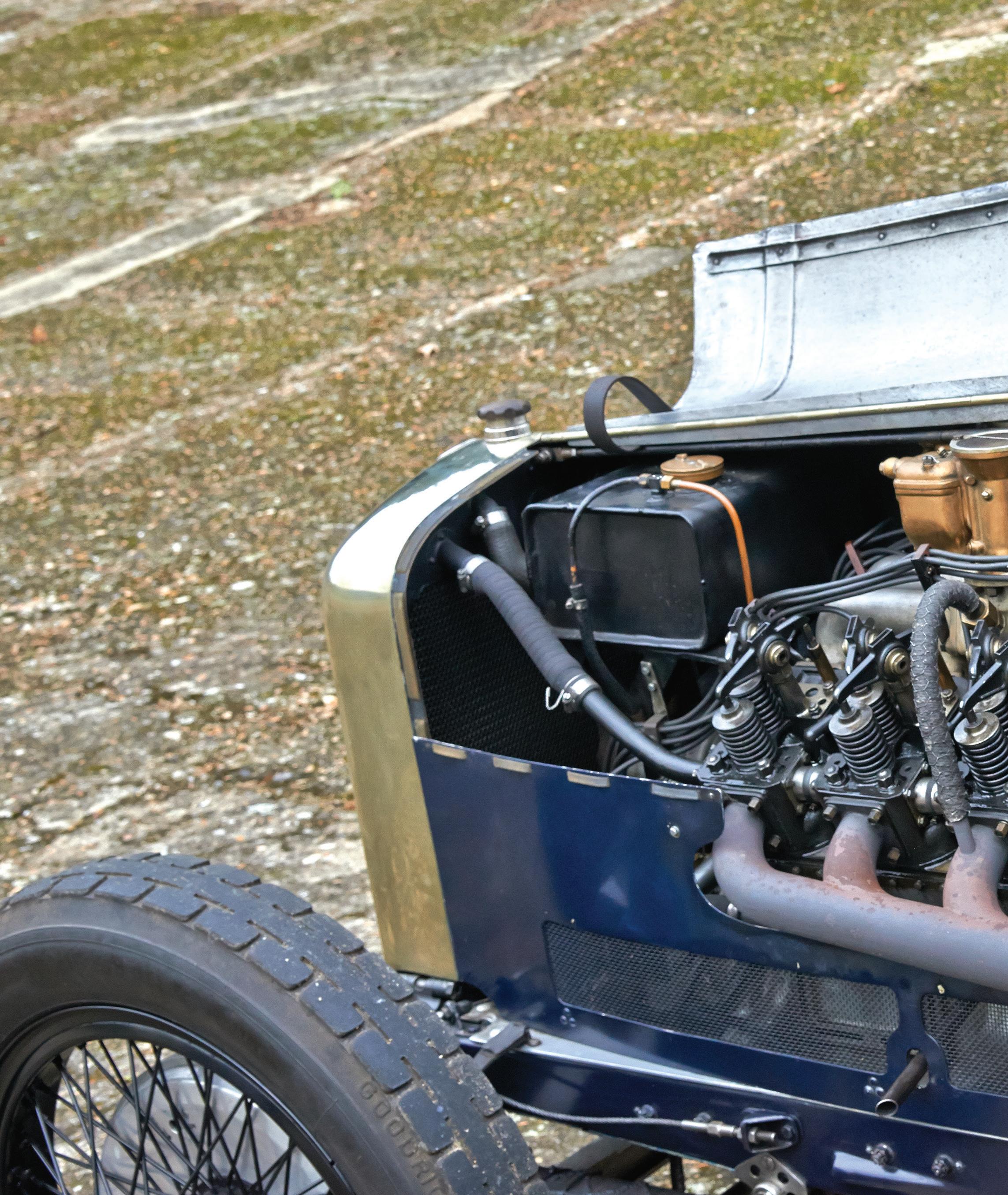


It’s a cold, rainy, downright miserable day at Brooklands. A group of trainee mechanics and engineers are working on the Finishing Straight. They’re aged between about 15 and 17, all male. Suddenly they hear the unmistakable gurgle, splutter and eventual roar of an engine on the banking and they’re off, legging it up the Straight hoping for a better view. They call out to a Brooklands worker, asking who’s behind the wheel. When the simple answer ‘a woman’ comes back, all hell breaks loose. She can’t! A girl, really? Can she do it?
When do you think this event took place? 1907, when Ethel Locke King led the Brooklands opening parade? 1932, when Bill Wisdom and Joan Richmond won the Junior Car Club’s 1000 Miles Race? Or 2020, when Abbie Eaton drove Kay Petre’s Delage around the Members’ Banking and Mercedes-Benz World track? As the accompanying pictures will have told you, the answer is 2020. Many of you may know that Middlechild Productions has been

Women have been involved in motorsport since the very beginning. Dorothy Levitt became the World Ladies Land Speed Record Holder in 1905 and invented the rear-view mirror yet was still refused admission to races at Brooklands in 1907. When women were allowed to race at Brooklands in the one-off 1908 Ladies’



Special Bracelet Handicap, they tied scarves around their ankles to hold their skirts down for modesty. A Huge step towards inclusivity, you’d think, but no. It was 19 years until the next Ladies’ Race at Brooklands and another five until the first official mixed race if we discount the staged race orchestrated by Barbara Cartland in 1931. This despite the
global success of female motorists and a woman financing and running Brooklands Motor Circuit.
We are seeing a movement towards more inclusivity in motorsport, with the success of Racing Pride and the W Series. Jamie Chadwick, the inaugural W Series Champion, is now a development driver with Williams and there were two allfemale teams in the 2020 Le Mans 24 Hours. In some serendipitous metaphor, these all-female teams echoed the ninth place finish of Brooklands’ very own Joan Richmond when she raced in the 1935 edition. That’s the thing: it’s been almost 100 years of women racing at the pinnacle of motorsport and 30 years of Brooklands Museum telling the story of British motorsport, yet there’s still a media frenzy when a woman gets behind the wheel.
We’re part of the problem. Women’s stories at Brooklands and other museums are temporary. Exhibitions, talks, articles in magazines. To quote the musical Hamilton, we need to let them ‘be a part of the narrative’. Ask anyone vaguely interested in motoring and they’ll be able to name male drivers like Ayrton Senna or Malcolm Campbell.
They’re household names, but Soaking wet conditions did nothing to dampen Abbie’s enthusiasm for her first ever drive in a pre-war car and she quickly got the hang of pressing on in Kay Petre’s V12-powered Delage. Eddie Williams from The Classic Motor Hub passes on some of the finer points to Abbie about driving a pre-war racing car, which demands the driver’s full attention at all times. Filming for the new series about Brooklands that will air on the Yesterday channel took time, but it gave Abbie the opportunity to find out about the many women racing drivers at Brooklands.at the Museum, filming a new series for the Yesterday channel. They want to pull out some of the inspiring stories that happened here, including the history of women in motorsport. Eddie Williams from The Classic Motor Hub brought Kay Petre’s 12-cylinder Delage and Abbie Eaton was invited to drive it around the Members’ Banking. As the new Fundraising
the women aren’t. Even our very own Grand Prix Exhibition in the Jackson Shed ignores them. For a young girl visiting Brooklands looking for stories of the drivers that came before her, the only women she’ll see are in a photograph of a cabaret held by the Doghouse Owners’ Club set up by wives and girlfriends of Formula 1 drivers and team members.


Fast-forward to 2018 and the announcement of the W Series. The idea of an all-female championship was seen as controversial, but it has brought women racing drivers to daytime free-to-view television. It shows a generation of girls they can compete and tells sponsors there is a viable business opportunity in investing in female racers, awarding super licence points to help women move into the higher categories. Even original opponents of W Series like Abbie Eaton are taking part in and promoting it. Women shouldn’t need a separate series to become serious racing drivers, and nobody is arguing for it to exist permanently, but the fact remains that since before the opening of the world’s first purpose-built racing circuit the system has been working against them.

While men like Hugh Locke King were building golf courses and racetracks on a
and Development Officer and W Series addict, which Eaton was lined up to race in this season, obviously I jumped at the opportunity to be included in this spectacle.
The motor enthusiasts among you may recognise Abbie Eaton as the test driver on The Grand Tour. When Jeremy Clarkson

whim, women were fighting for the vote. In the 1920s, women who had been keeping the country running and filling in the jobs men in the forces had left behind during the First World War suddenly found themselves back to being wives and mothers. A similar thing happened in the 1950s. The story of social change in the 20th Century is one of women finding themselves pulled out of the home, only to be pushed back into it when their services were no longer required.
Advances in technology were meant to free up women’s time, but only left them with no excuse not to have the dinner on the table when their husbands came home from work. And this is seen in motorsport. Women aren’t strong enough to handle cars, critics say. However, drivers like Abbie Eaton, Jamie Chadwick and Juju Noda tell a different story. They aren’t good for girls, they’re just good.
introduced her, he explained that they’d tested everyone they could think of, from stunt drivers to Formula 1 drivers, and here she was. I remember the shock of that ‘she’ and 28-year old Abbie’s casual ‘Right, here we go’ so well. I grew up wanting to be an F1 correspondent but didn’t see anyone who looked like me in the television footage. There was the occasional female
 Once Abbie had mastered the controls of the Delage, she enjoyed exploring its potential at Brooklands where Kay Petre drove this car to become briefly the fastest women at the circuit.
Once Abbie had mastered the controls of the Delage, she enjoyed exploring its potential at Brooklands where Kay Petre drove this car to become briefly the fastest women at the circuit.
correspondent and grid girls, and that was it. So, the idea of a woman being the new ‘Stig’ was more groundbreaking to me than the idea of a female Vice President in the White House.

However, nothing prepared me for the shock of discovering Brooklands Museum while job-hunting two years ago. Who knew that in Surrey more than 100 years ago, women were pelting around a track at speeds most people won’t even reach today? I certainly didn’t. The then-Gwenda Stewart became the fastest woman at Brooklands at 135.95mph in 1935.

To put that in context, when the new Electric Racing Academy Championship launches in 2021, the cars will run at around 118mph, while current Formula 1 cars average 145mph around Silverstone. In three years, I’d gone from being completely starstruck at the thought of a woman driving with Clarkson, May and Hammond to working at a circuit I didn’t even know existed. Even better, my work now involves researching at least 80 women who raced around the Brooklands oval. And here I am, spending the day with Abbie Eaton.



Speaking to Abbie, it’s clear she runs on petrol. Brought up in the world of motorsport, she started driving at 10-years old after accompanying her father, racing driver Paul Eaton, to his races from two-months old. She has that northern no-nonsense kind of cool and seems to be most at ease when behind a steering wheel. She is a fearless driver, gathering multiple wins and podiums over the years, and became the first woman to win the Blancpain GT Series in 2017. So, Abbie has driven many vehicles, but this event was her first venture into pre-war cars.



“ Attention to Detail”
We could not be more thrilled that both the original Rolls-Royce Silver Ghost ‘AX201’ and the Rolls-Royce 10HP ‘SU13’ returned to P & A Wood at the start of 2020.

The two cars, representing the very best of Rolls-Royce motoring history, have received all of the required maintenance over the past year to return them to their full glory.
To our absolute delight they were acquired by an extremely suitable custodian who will care for them exactly as they should be.
Once owned by Oliver Bertram, the 1923 Delage is ridiculously tall and long with comically large tyres. Put a nearly 6ft woman behind the wheel and she’s dwarfed, which begs the question: how did 4ft 10in Kay Petre briefly become the fastest woman around the Brooklands Outer Circuit in this thing? Well, if Petre was anything like Abbie Eaton, it must have been easy. Even with the rain pelting down and the chill in the air making our fingers freeze, Abbie proved exactly why Petre and her contemporaries were known as ‘motorinas’.





The Delage is surprisingly delicate, according to Eaton, despite the steering being heavier than she’s used to. Tug the wheel once and it’s an effort but pull some more and the car is whizzing around exactly how you want it to. A tap on the pedals with your toes and heel, with the throttle in the middle and brake on the right-hand side, and you’ve brought the car under enough control to be able to drift it, push it, do whatever you want with it.

Out on the Mercedes-Benz World track, the Delage comes into its own. Sitting in the passenger seat while Abbie dances it around the bends, I couldn’t help but wonder what Petre would have managed to get the car to do on a circuit like that. Down the back straight, Abbie slams her foot down while leaning across me to pump the Ki-Gas. One hand on the wheel, one hand on the Ki-Gas pump, one eye on the essence dial, the other on the bend ahead. You can practically hear her figuring out when and how hard to pump the brakes to make the turn. All
this with rain and grit from the track being blown into our eyes from the speeds she’s pushing the car to.
Then we’re off through the bends, rainwater splashing up into the passenger seat. The driver is fine thanks to a tiny windshield which manages to do far more work than you would give it credit for. It’s a mad rush and all I can hear is the roar of the engine and Eaton laughing. She makes it look so easy. She pulls over on to the grass - woe betide anyone who drips oil onto the Mercedes circuit – and gives the car 10 out of 10. There’s something infectious about her enthusiasm and when I mention her possibly maybe coming back to Brooklands and having a go in another car, she’s said yes before I’ve even finished the question.
For most people, the abiding memory of the experience I had with Abbie Eaton would be the rush you feel tearing down the back straight at Mercedes-Benz World.


Maybe the bruises all over my knees and hip from being whacked against the bodywork at each turn, and the smell and roar of that 97-year old V12. But for me, it was the look in Abbie’s eyes as she turned to me. Hearing an actual racing driver at the top of her game saying she’d had no idea about the history of women at Brooklands. I don’t know if I was reading into it, but I know that look. It’s the same look I get when I discover a new name in the archives, such as Ivy Cummings, Florence Blenkiron or Mildred Bruce. It’s the look that asks where has this information been all my life? These stories are out there, and if we really want to support women in motorsport, we need to tell them.
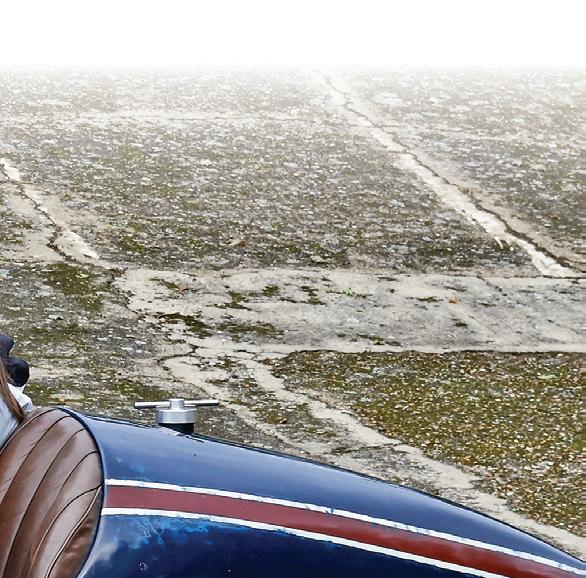


For several years, Brooklands has been visited by many and varied television and film productions eager to get the site or parts of the Collection onto our screens. From the Antiques Road Show and The Crown to The Classic Car Show and countless
documentaries, they have all shown parts of the collection, prompting Members and Volunteers to modestly claim some association with the on-screen action. All that changed in August 2020 as the Collection and Volunteers became the primary focus for a major new 10-part

UKTV documentary. It will showcase the major components of the collection and document some of the most important historic events associated with Brooklands.

As the Museum closed its gates for the second time this year, I caught up with the Series Producer Andrew Walmsley, of Middlechild Productions, to fi nd out how the series was commissioned and about the challenges of fi lming during 2020.

Andrew explained the idea of exploring what it takes to maintain heritage transport
Words:
Copy
Despite the challenges of a pandemic, filming at Brooklands went smoothly thanks to the hard work of the television crew and Volunteers.
came about following a discussion with Lady Judy McAlpine, President of the National Transport Trust, who suggested that he follow up his ideas with Brooklands Museum Director, Tamalie Newbery. Very soon Transport Workshop (as it was provisionally titled) was one of Middlechild Production’s projects. The concept was developed further by Creative Director Andrew Eastel and, prior to being


pitched to UKTV, Andrew was back at the Museum in early 2020 to film some of the Volunteers working as part of the proposal. The commission was by no means a foregone conclusion. Andrew said: ‘I was convinced the site, its incredible vehicles and amazing volunteers would be perfect for viewers of the Yesterday Channel, but it’s incredibly difficult to get commissioned. It was wonderful to find the channel shared
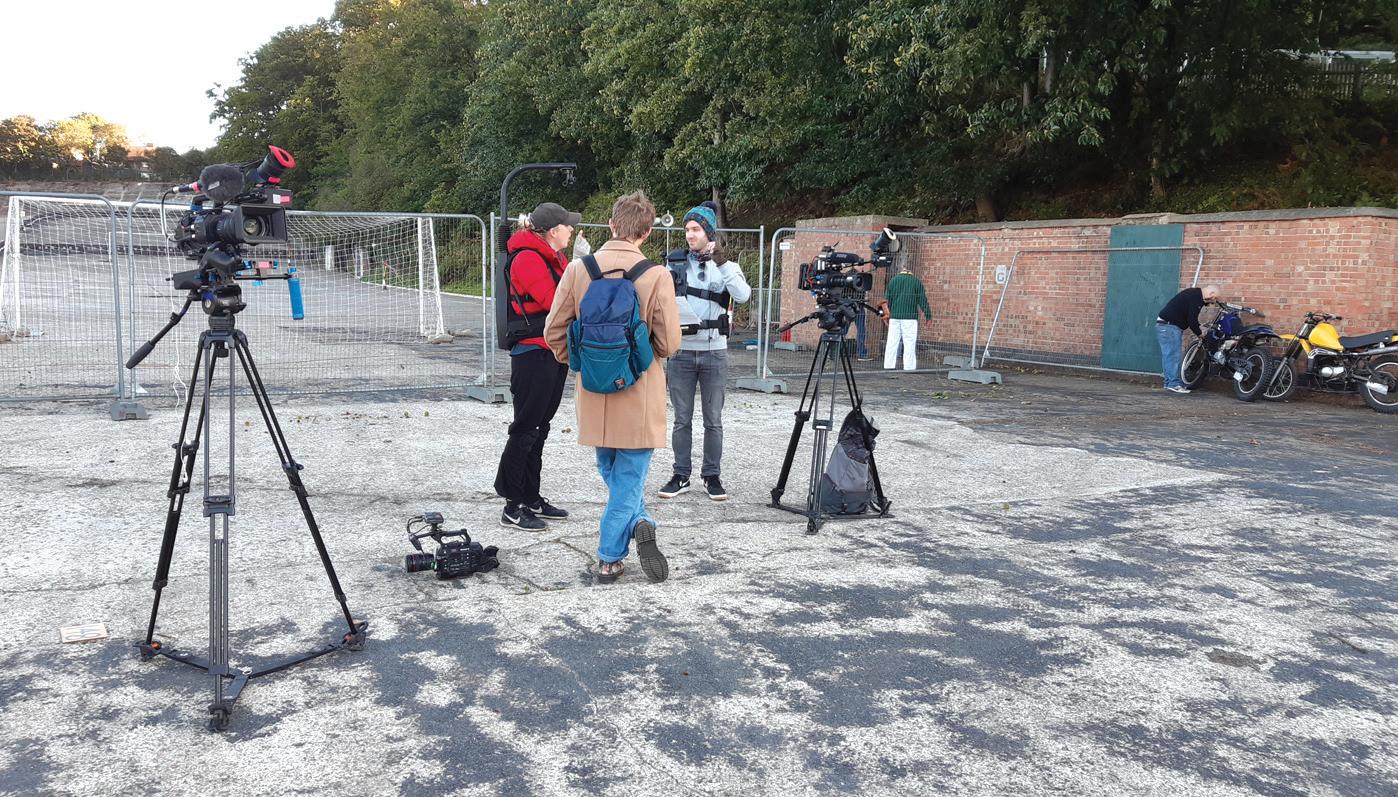
the same enthusiasm for the subject and came back quickly with the news that filming could begin.’
The key to a successful series is diversity of content and what the industry refers to as ‘jeopardy’. We have all seen a group on television struggling to meet a deadline. However, it was Middlechild that faced its own dilemma during the summer of 2020 as there would be no series without a Museum. So, it was with a sense of relief that Andrew’s team learnt they could start shooting in the Museum as Volunteers and visitors returned.
Covid has presented a number of practical challenges, such as sanitising microphones and managing paperwork. Andrew described how with fewer events and what was perceived to be a finite number of exhibits, there was some initial concern about the amount of content needed for 10 hours of television. However, as the cameras began rolling during August 2020, it was immediately clear they would have more than enough.
Asked for his highlights, Andrew picked a few that he thought represent

the diversity of Brooklands, including the Barnato-Hassan and Napier Railton. The story of these cars is told against the backdrop of the banked circuit at the Millbrook Proving Ground in Bedfordshire. The cars, together with the recreation of the record-breaking Freddy Clarke Triumph motorcycle, were in their natural environment. Andrew explained that his usual small crew had expanded to include the Museum’s vehicle support teams, drivers, riders and a mobile tracking camera crew who would be getting up close and personal at high speed with a ‘Russian Arm’, a piece of kit which enables smooth driving shots of the vehicle and driver from angles not possible from a second vehicle.
Another highlight for Andrew is the Freddy Clarke Triumph owned by Motorcycle Team Member Perry Barwick, who explained the filming gave him a unique opportunity to ride the bike as it would have been ridden at Brooklands.

For reasons of comfort, Perry fits conventional bars and alters the seat position when riding at Brooklands Outreach events. After filming, Perry gained a better understanding of the riding stance and discomfort the riders must have experienced on the outer circuit. Also on track was Motorcycle Team Member Michael Digby, who will also feature restoring a barn find.
One other highlight for Andrew are many of the iconic names associated with Brooklands, including Barnes Wallis who is represented with the development of the Bouncing Bomb. After some initial
filming with Volunteers at the Museum, everyone relocated to Silvermere Lake, the site of Wallis’ original test.
Andrew said: ‘I thought I knew the story of Operation Chastise, but when you dive into the subject it’s incredible what you find out. It was fascinating to learn about the work of Barnes Wallis at the Museum and I even got to spend some time in his office when we first arrived. We managed to rig up the experiment at the side of the lake and even had Barnes Wallis’ daughter with us.’
The series will feature 10 main subjects, with 30 other

projects and events shown. They include The Aircraft Factory, Mike Bannister and the Concorde Simulator, the Vickers Vimy, The Car Rides Team, Napier Railton, and Motoball on the Finishing straight.

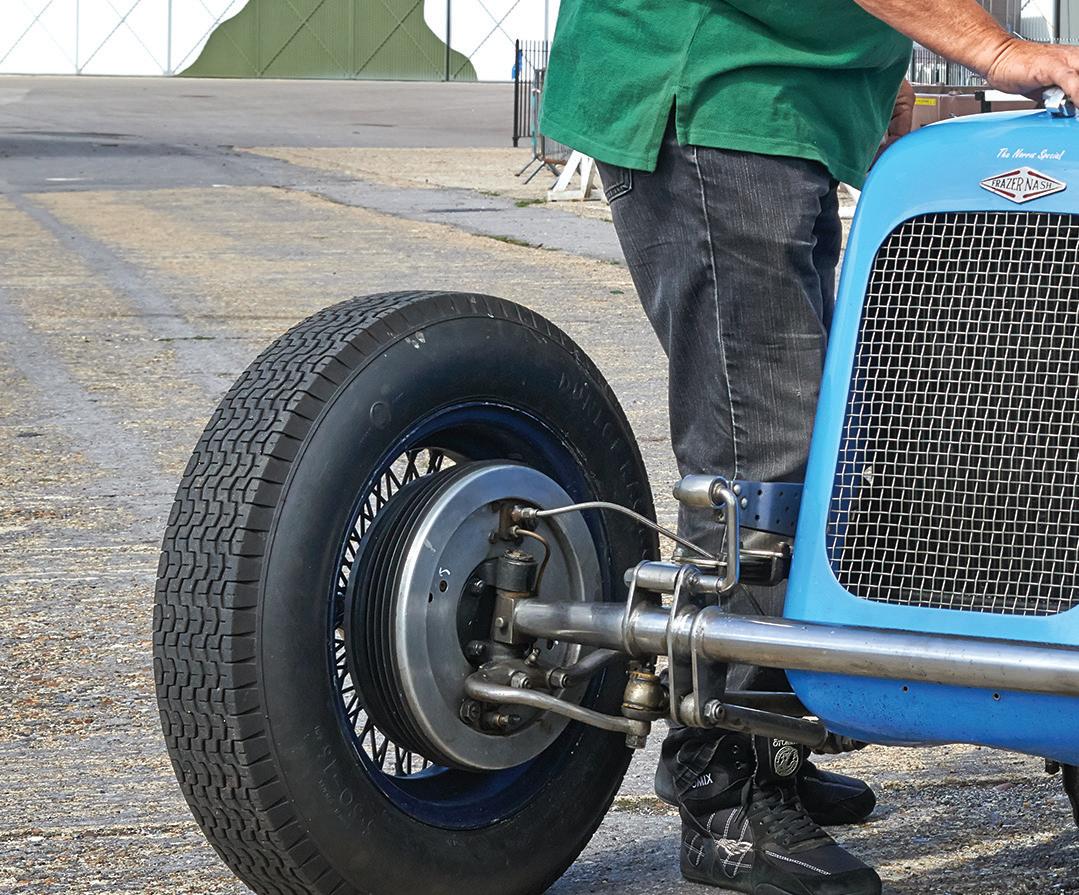


Although there was no confirmed transmission date as the Bulletin went to press, the series is due to air on the Yesterday Channel in the spring of 2021. Yesterday is available on Freeview channel 26, Sky UK channel 155, Virgin Media channel 129, and Freesat channel 159. It will also be available on the UKTV Play Catch Up service.

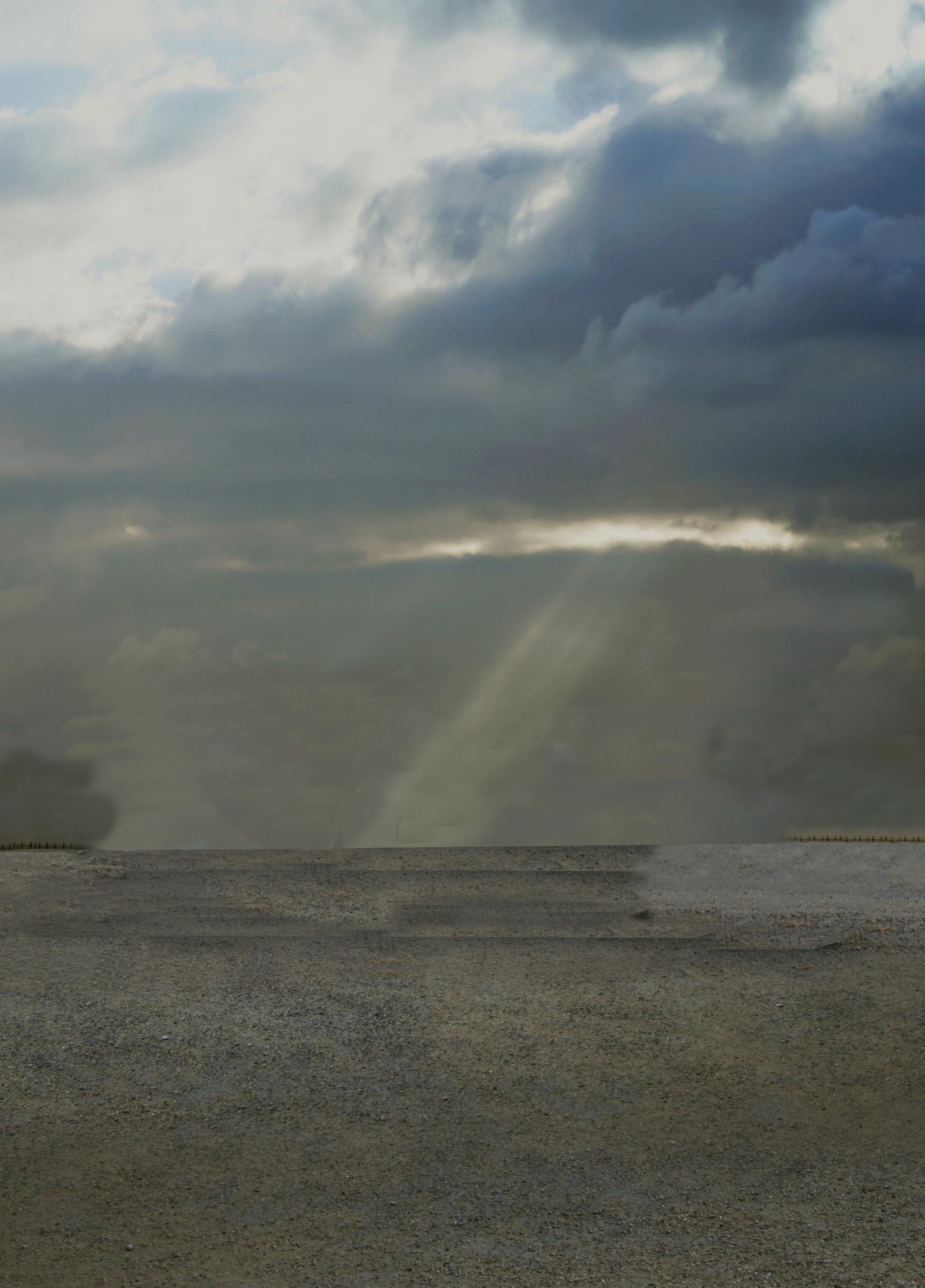










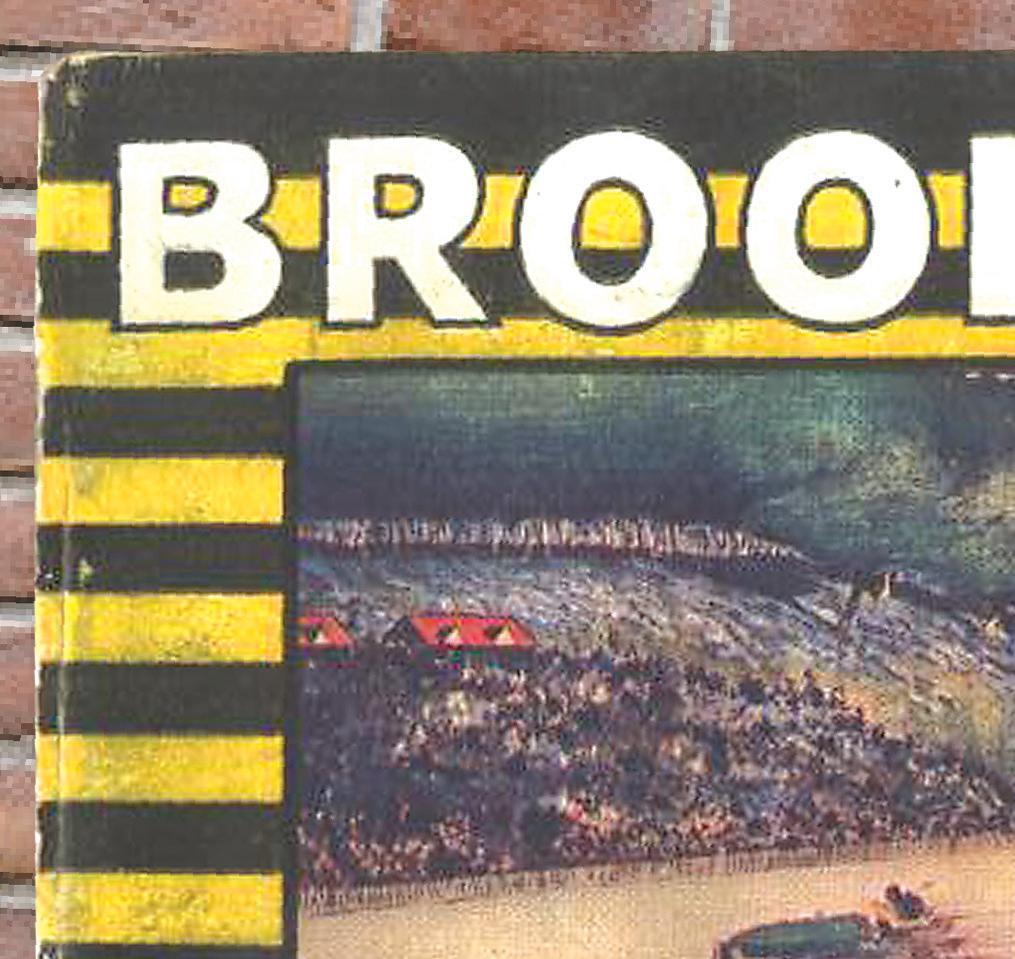
these 12 significant images.







Words: John Pulford Images: Brooklands Museum Collection




Probably the first ever poster designed for closed circuit motor racing, it does not appear the artist had actually ever experienced any. The cars are portrayed in the manner of race horses on the home straight rather than motor vehicles that were handicapped and spaced according to their performance potential. The track has also clearly been painted more from imagination than as it would have appeared from that viewpoint, unsurprisingly as it would still not have been finished when the artwork was commissioned. It is not known how long this poster design was used, but the central image appeared on BARC race card front covers until 1929.


1930 saw major changes at Brooklands with the arrival of a new Clerk of the Course and the old painted image of 1907 was finally abandoned on the front covers of the race cards. A new highly fashionable geometric look was adopted instead and the posters were designed to match. On this day, Tim Birkin successfully broke the Outer Circuit Lap Record achieving 135.53mph in his single-seater Bentley.

Unlike most other known posters of the period, this image focuses on the spectator rather than the driver. Bank Holiday Races were run by the Brooklands Automobile Racing Club and offered a varied programme of events from match races to short sprints or demonstrations of supercars such as the latest Blue Bird Land Speed Record car. These days were likely to be a family day out with a picnic on one of the grassy slopes that this poster colourfully illustrates.

















By 1932, the image on this poster of the driver standing like a colossus over the cars racing beneath his feet had already become the standard on BARC race cards and remained so until the Track closed in 1939. There is no visual reference here to any spectators, as there was the year before, but the slogan ‘The Right Crowd and No Crowding’ had arrived to stay.





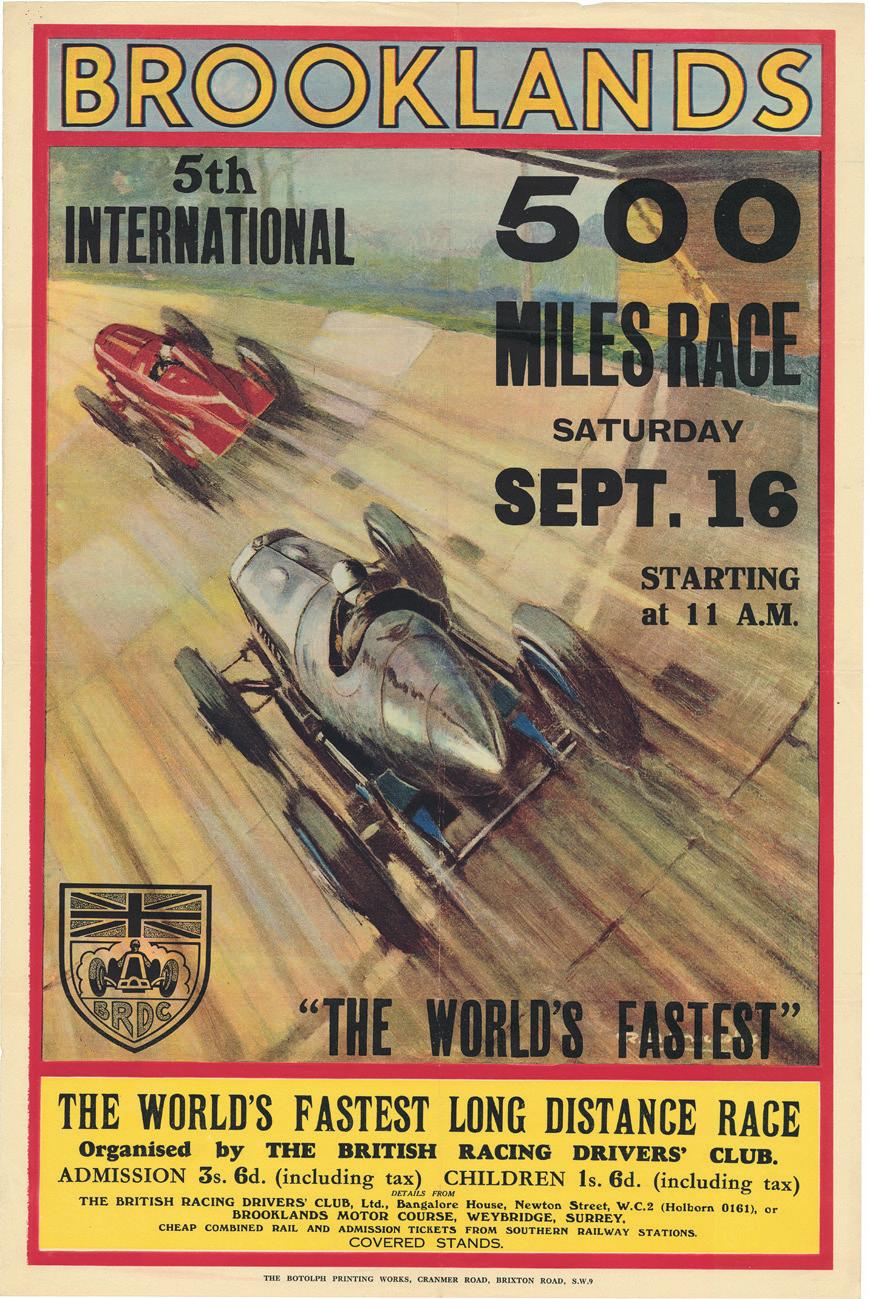







This was a new event introduced by The Junior Car Club to replace the Double Twelve and the image designed by the leading motor racing artist F Gordon Crosby was reused from previous years. The idea of watching cars lap the track 200 times on each of the two days was not a great crowd puller and despite the dynamic poster design attendances were poor and the race was not run again.

Next to F Gordon Crosby, one of the great motor racing artists of the time was Roy Nockolds and here he places speeding cars unmistakably on the steepest section of the Brooklands banked track. As with other long-distance races, a good attendance could not be guaranteed so it is not surprising the British Racing Drivers’ Club commissioned this powerful image to attract its audience. On this occasion, good crowds were present although they sadly witnessed the fatal crash of Clive Dunfee close to the very stretch of track illustrated on the poster.







Another long-distance race organised by the Junior Car Club clearly demanded another dramatic image, this time from German artist HJ Moser, who was also commissioned by the BRDC to illustrate the covers of the club’s Speed magazine.












With the opening of the Campbell Road Circuit in 1937, motorcycle racing increased in popularity. This meeting was staged by the British Motor Cycle Racing Club just two months after the completion of the new circuit and was the first motorcycle race to be held on it. The poster is a rare example of one advertising solely motorcycle racing.



This poster from 1931 avoids any imagery but uses the power of letter block printing to great effect. The organisers were only charging adults half the entry price of a race meeting, perhaps because an air display could be enjoyed to some extent without passing a turnstile. At least they avoided the cost of commissioning an illustrator. It was printed at the Press at Coombelands in Addlestone, which had been newly built and opened in 1927, complete with houses for the employees. The printing press was partly taken over in 1940 by Vickers-Armstrongs for the manufacture of Wellington parts.
The King’s Cup Air Race was first held in 1922 and was organised by the Royal Aero Club for Commonwealth pilots. It was staged at Brooklands in 1928 and 1932. This poster from 1932 promises speed and daring, as did the Brooklands motor racing posters of the same year.





This Air Display of 1933 was organised by the Guild of Air Pilots and Air Navigators. The poster artist was Cyril Peckham, designer of aviation posters in the 1920s and ‘30s, who later went on to become the chief photographer at Hawker-Siddeley and designed his own camera for aerial photography. The event had become established as a regular London seasonal fixture and was to be opened at Brooklands by the Secretary of State for Air.








This clean, modern, block-printed two-colour image that includes spectators is so simple in its design it belies the historical importance of the day. The event was organised by Brooklands Aviation Ltd to coincide with the opening of the new Brooklands Aero Clubhouse. Promoted in Air & Airways magazine as ‘England’s Greatest Civil Air Display’, it featured aerobatics by the Royal Air Force, parachute descents and ‘stunt flying’. Special guests included Amelia Earhart and Amy Johnson.














The Museum’s R for Robert is the only surviving Brooklands-built Vickers Wellington. Eighty years on from ditching in Loch Ness and 35 years since it was salvaged, here’s the aircraft’s fascinating story.

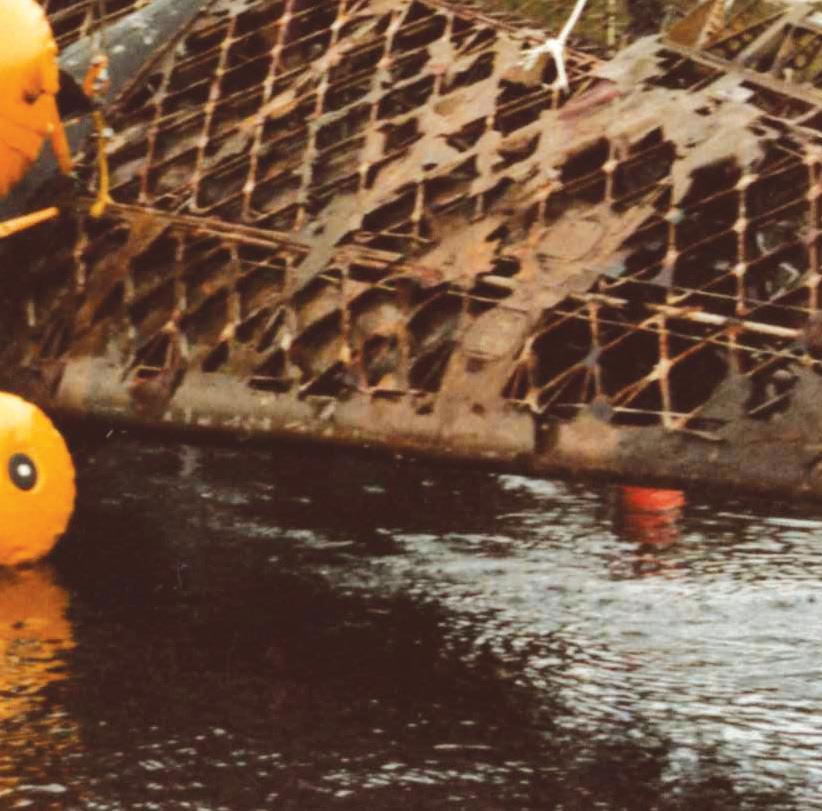

Words: Julian Temple Photos: Brooklands Museum Collection, Stefan Lange, Julian Temple

Allocated military serial number N2980, Brooklands Museum’s Wellington aircraft was one of 120 Mk1As, all built at Brooklands, and powered by two 1050hp Bristol Pegasus MkXVIII engines. First flown on 16 November, 1939 by ‘Mutt’ Summers, it was delivered four days later to
149 Squadron at RAF Mildenhall in Suffolk, where it was given the code letter ‘R’ for Robert. It survived the infamous Battle of Heligoland Bight daylight raid of 18 December, 1939, flown by Squadron Leader Paul Harris. Twelve of the 22 Wellingtons attacking the port of Wilhelmshaven were shot down by cannon-equipped Messerschmitt Bf 109 and Bf 110 fighters.

After five more missions with 149 Squadron, N2980 joined 37 Squadron at RAF Feltwell in Norfolk on 30 May, 1940 and took part in seven more day and night operations.
Retired from front-line use after surviving 14 operations, N2980 transferred to 20 Operational Training Unit at RAF Lossiemouth in Moray on 6 October. While on a routine cross-country navigation
training flight, unfortunately, our battleweary aircraft suffered a starboard engine failure during a heavy snowstorm and was ditched in Loch Ness by its pilot, S/Ldr David Marwood-Elton, and second pilot, Pilot Officer John Slatter, on 31 December, 1940. All eight crew escaped from the aircraft, but tragically 20-year old rear gunner Sgt John ‘Jack’ Fensome died having pulled his parachute’s ripcord too soon.
More than 35 years later, the forgotten Wellington was discovered in 1976 by an American sonar-equipped survey team seeking the legendary Loch Ness Monster. Although initially mistaken for a Catalina flying boat and lying at a depth of 70-metres, beyond the reach of most divers, N2980’s existence was soon confirmed. While ideas about its rescue were being considered by enthusiastic Heriot-Watt University staff, a 1981 underwater video survey revealed the structure was now seriously deteriorating. The Loch Ness Wellington Association was duly formed as a charity by Heriot-Watt lecturer Robin Holmes in 1984 to recover and acquire the aircraft. The Brooklands-based Vintage Aircraft and Flying Association (VAFA) soon became their major partner.

A professional salvage operation subsequently went ahead with a £25,000 contributory grant from the National Heritage Memorial Fund and the Institute of Offshore Engineering co-ordinating work
by the Oceaneering International and JW Automarine diving team. Other participants included Robin Holmes of Heriot-Watt University and Loch Ness Wellington Association Chairman, plus Morag Barton, Norman ‘Spud’ Boorer, Mike Goodall, Ann Huckins (now Watson) and Fred Moore all from Brooklands Museum. Also helping were Dick Alder, Norman Barfield, John Broad, Dave Clark, Martin Cutler, Allan Jeffcoate, Cliff Knox, John Mitchell, Dave Pearce and Hugh Tyrer, who were all from British Aerospace, Weybridge and VAFA.
At the end of a stressful nine-day operation disrupted by bad weather and a failed lifting frame, N2980 was successfully raised from the depths of Loch Ness on 21 September, 1985. The starboard wingtip first surfaced at 7.45pm at the east end of the loch, having been towed underwater while suspended from airbags, and was then craned onto a barge. Having separated from
the fuselage, the tail section was retrieved the next day using similar methods. Despite spending nearly 45 years underwater, the aircraft was incredibly well preserved. The tail lights still worked when connected to a modern battery, many of the crew’s possessions remained on board and even some fabric covering had survived.

After RAF specialists had removed all live ammunition from the wreckage and dealt with other potential hazards, further dismantling was followed by loading onto road transport. N2980 was safely returned to its Brooklands birthplace by British Aerospace on 27 September, 1985, arriving late afternoon at the future Brooklands Museum for an official welcome by the Mayor of Elmbridge and other dignitaries.

In September 1986, I started working as the Museum’s part-time industrial

We cannot thank our members enough, for all the donations you have given us over the last 12 months, the memberships you’ve renewed, the gifts you’ve bought from the shop, and the visits you have made to the Museum. It’s been a tough year, but its been helped by the overwhelming support you’ve given us. All, we can say, is that we are very excited about 2021 and we are happy you’ll be coming along with us for the ride.
Happy New Year, from everyone at Brooklands Museum.

archaeologist, having missed the action at Loch Ness a year earlier but followed much of the press coverage at the time. I had also enjoyed watching the BBC TV documentary One of Our Bombers Is No Longer Missing

that was first shown on BBC2 on 30 December, 1985. Little did I know then that I would get to know this special aircraft very well over the next 35 years.
Meanwhile, after considerable discussion, the decision was taken to restore the aircraft as a complete airframe able to stand on its undercarriage yet also preserving and re-using as much of the original structure as possible. Parts from other Wellingtons were otherwise used, notably a central fuselage section that had been serving as a greenhouse in Shropshire! New material was only used as a last resort.


The first meeting of the Wellington Preservation Policy Committee, later

succeeded by the Wellington Project Co-ordination Group, was held on 11 December, 1985. Further guidance came from a carefully defined restoration policy




During its move in September 2016, the Wellington had to manoeuvre delicately past Concorde.


which I recall was partly influenced by the RAF Museum’s decision to conserve and display its 1942 Halifax bomber salvaged from a Norwegian fjord in 1973 in a largely unrestored condition in its new Bomber Command Hall that opened in 1983. Exhibited in the same building was the RAF Museum’s own complete Wellington, a
1944 trainer variant only used post-war, with most visitors largely unaware of the intricate geodetic construction hidden under the fabric covering. It was agreed that N2980’s long-term restoration would end with the fuselage being only partially re-covered with fabric in order to explain its geodetic structure to visitors as well as to enable any future corrosion to be easily seen and treated.
Restoration started with further dismantling of the aircraft and all components being thoroughly cleaned and treated for corrosion prior to reassembly. This work was carried out almost entirely by a growing number of volunteers co-ordinated by a project team leader and each person worked one or more days per week on various components including fuselage, inner wings, engine nacelles, tail plane and fin.
After initial storage in the Museum’s Stratosphere Chamber, both outer wings were taken to Luton Airport where they were largely restored in 1988-89 by Royal Aeronautical Society (Luton Branch) volunteers working in Monarch Aircraft Engineering premises. Monarch apprentices also helped restore the port wing. The port engine, undercarriage, tail wheel and other assemblies were stripped down, carefully cleaned and reassembled by British Airways Engineering volunteers at Heathrow Airport and the starboard engine was treated similarly by the Rolls-Royce Heritage Trust at Filton, Bristol. Very little of the rudder had survived, so British Aerospace Kingston apprentices constructed a new unit using the surviving original parts. The bomb beam was restored by Dan-Air Services at Lasham Airfield and Dunlop’s Aircraft Tyre Division refurbished two Vickers Viking main wheels and tyres, and manufactured new inner tubes. Further help-in-kind came from British Aerospace, Lostock, British Alcan, which donated 1.5-miles of newly-extruded geodetic section, and Brooklands College.
Initially, British Aerospace employee and VAFA Vice-Chairman John Mitchell had led the volunteers as they were largely from the VAFA. By 1987, former RAF and airline pilot Clive Leach was leading the team until newly-retired aircraft engineer Bob Casbard took over in 1988. Bob managed the largest number of volunteers during the hardest years of the project, with the fuselage completed and inner wings refitted by early 1992. Aircraft engineer



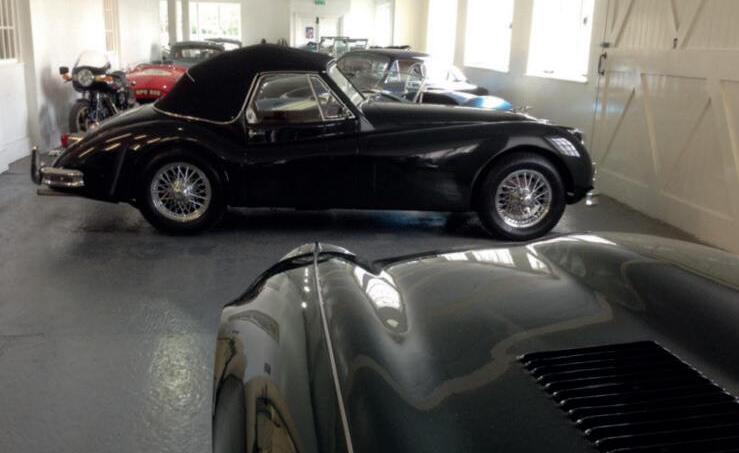

John Lattimore succeeded Bob and 1993 saw the restored tail surfaces refitted and the main undercarriage with new doors too. Then, 1994 marked the milestone in N2980’s reconstruction when the bomb beam, bomb bay doors and port engine were all refitted that spring. The starboard engine was then temporarily installed before the aircraft was lowered onto its undercarriage and all supporting jacks removed on 18 May. Once the outer wings had been refitted that September, the airframe was structurally complete at last.
As the Museum’s first Curator of Aviation and responsible for overseeing the project from 1987 through to 2007, I was lucky enough to know many members of the restoration team. They often shared their fascinating personal connections with Wellingtons, many having helped build, maintain, operate or even crew and fly in these much-loved aircraft. As part of my job, I was also privileged to meet and show off the project to many former
Wellington aircrew, as well as aviation historians, journalists, sponsors, supporters and VIPs, all of whom were fascinated to view progress with the rebuild. Such people notably included ex-RAF wireless operator Bill Wright, who parachuted from the aircraft before it ditched, Robin Holmes and others from the salvage team. There was also comedian and ‘Goon’ Michael Bentine, who had been an Intelligence Officer on a Czech Wellington Squadron and recalled how crews sometimes emptied their ‘Elsan’ toilet down the flare shute on leaflet dropping missions over enemy territory!
By late 1997, more than 70 companies and hundreds of private individuals had generously supported this unprecedented restoration project by donating funds, specialist services, parts, materials and time. Most of the restoration work was now finished apart from some internal items, with more than 250 Museum Volunteers having dedicated more than 100,000 manhours during the project’s first decade.
Although the final numbers of volunteers and their man-hours were never fully recorded, their ultimate achievement in restoring the only surviving Brooklandsbuilt Wellington to such a high standard is a remarkable engineering triumph. It’s also surely the most impressive aircraft restoration project accomplished by volunteers in a British museum at that time.

More recently, N2980 was removed from the Wellington Hangar on 15th September, 2016 as part of the Brooklands Aircraft Factory and Race Track Revival Project. It was towed on its undercarriage for the first time since 1940 for thorough cleaning and minor restoration in a temporary hangar. Returned to the restored and relocated Bellman Hangar 10 months later and fully interpreted to visitors for the first time, N2980 is now the central and most important exhibit in the award-winning Brooklands Aircraft Factory exhibition that was officially opened by HRH Prince Michael of Kent on 13 November, 2017.

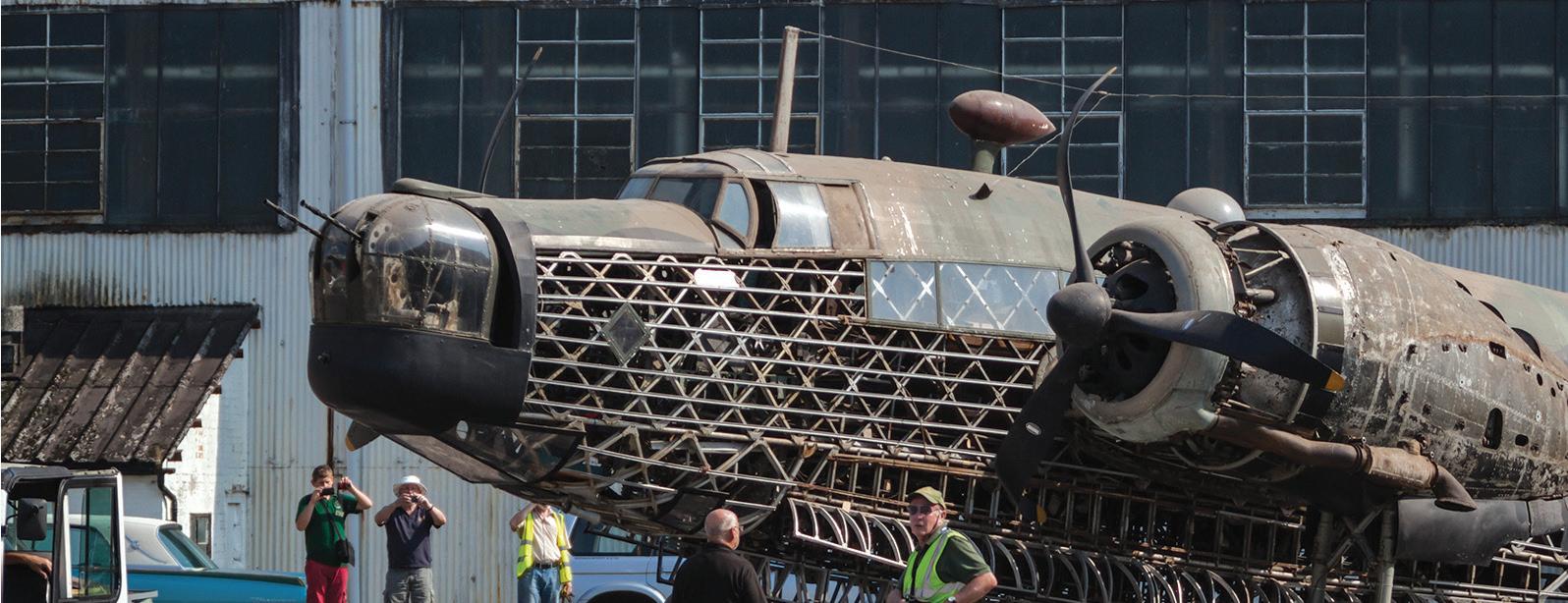
The Vickers Wellington was developed from the Wellesley long-range monoplane by Vickers Aviation’s chief designer Rex Pierson and his team as the Vickers Type 271. Initially named the Crecy, it was first flown from Brooklands by chief test pilot Joseph ‘Mutt’ Summers on 15 June, 1936. Although no official prototype was made, an initial order for 180 production aircraft was placed two weeks later. The first true Wellington (L4212) first flew on 23 December, 1937 and the first production machine (L4215) was delivered to 99 Squadron at RAF Mildenhall, Suffolk on 10 October, 1938.
Widely recognised today as being the RAF’s best bomber at the start of the Second World War, the Wellington had a large bomb bay, long range and its Barnes Wallis-designed, fabric-covered geodetic structure. This made it very strong, relatively easy to repair and able to withstand heavy damage from enemy fighters and anti-aircraft fire.
Often nicknamed the ‘Wimpy’ after the popular Popeye cartoon character J Wellington Wimpy and also dubbed ‘the basketweave
bomber’ by the press, this was the only British bomber to be used throughout the Second World War. It served in every RAF Command in almost every theatre of operations and was in service from 1937 until the early 1950s. Ten RAF squadrons were equipped with Wellingtons before war was declared on 3 September, 1939 and some of these made the first RAF bombing raid on Germany the next day. Until replaced in front-line service by four-engined heavy bombers such as the Halifax and Lancaster from 1941, the highly capable and versatile Wellington formed the backbone of Bomber Command.
Unlike its contemporaries, this outstanding military aircraft was built in greater numbers than any other British bomber in history. In continuous production throughout the war, excluding the Crecy, there were 14 chief variants, another six main converted variants and others modified for further specific roles. In total, 11,461 were built and 2515 of these, some 20 per cent of the total, were made at Brooklands. The rest were manufactured by two ‘shadow’ factories at Squires Gate, Blackpool (3406 built) and Broughton, Chester (5540 built).





As the UK’s number 1 tobacco company1 we are recognised by our globally renowned brands
Behind

It is with sadness that I report the death of John SL Pulford, for many years a Brooklands Museum supporter, Member and Volunteer, who died peacefully at St Peter’s Hospital on the 9 October, aged 95.


Born in Rye, East Sussex he was evacuated to Bedford with his school in 1940 to escape the threat of invasion along the Kent and Sussex coasts. He joined the school division of the Air Training Corp and, in 1943, the RAF at Cardington a few miles away. Poor eyesight prevented him from serving as air crew but he worked in the Educational and Vocational Training scheme. His final posting was to RAF Kidlington, where he met his future wife, Dorothy, who was serving in the WAAF. He read Modern History at Hertford College, Oxford, was called to the Bar at Middle Temple in 1955, and followed a career in the Magistrate’s Court Service from which he retired in 1985.
His passion for history occupied much of his leisure time. For 30 years, he was the


Editor of the Walton and Weybridge Local History Society’s newsletter Dial Stone, and was the author of five publications published by the Society. One of these, The Locke Kings of Brooklands, Weybridge was published in conjunction with Brooklands Museum Trust in 1996 after years of meticulous research, undertaken before the Locke King family archives were retrieved from Zambia. It was from this research into the family and business correspondence then available it became evident that, without the effort and determination of Ethel Locke King, the Brooklands Motor Course would probably never have been completed.
John spent several years as a Brooklands Museum Library Volunteer, cataloguing many hundreds of letters and other Locke King family documents that arrived from Zambia in 1999. He was also the co-writer of several other publications including A Short History of Weybridge’, Memories of Old Walton and Weybridge, and local churchyard surveys.
The former Malcolm Campbell Delage 15-S8 Grand Prix car has an impressive history and is Rod Ramsey’s favourite Museum exhibit.
With a high amount of personal bias, I would like to nominate my favourite vehicle in the Museum as the 1927 Grand Prix Delage.


Only four of these cars were built, they all still exist and the one in the Museum is chassis Number 2. Many books and documents have been produced covering their ownership and history. So, it saddens me that it has been awaiting a rebuilt engine now for close on eight years. When Alan Burnard and I built the engine that was in the car when it was donated to the Museum, it was running.
We took part in about 10 or 12 events in France and they were keen to invite us. It was always just a demonstration run and a great noise! I acknowledge that funds are scarce and these rebuilds are expensive. For Alan’s sake, I hope you don’t mind me mentioning it as it was me that persuaded Alan to donate the car to Brooklands, the place where WB ‘Bummer’ Scott broke several speed records.
I’m not moaning, just keen to hear it fire up again!



I was really excited and a bit apprehensive as I set off for the Elms Hotel at Abberley as our base for the Shelsley Walsh Hillclimb. My 1962 Jaguar Mk2 3.8 known either as the J-Word or the F-Word performed amazingly and I got there in under three hours.

Next morning, driving to the circuit was meant to be an easy 25 minutes. Well, I tootled along, trailing some 15 patient vehicles until I entered a close and started to ring doorbells. At the sixth house, an Irishman clad only in a bathrobe came to the door and after accepting my grovelling he gave me helpful directions. Apparently, the sign was damaged, but I arrived at the correct time of 9.30am, although it had taken an hour and a half. Never mind, it warmed the oil.
After being divided into Blue and Red teams, we all walked the track. There is a deceptive left-hander but the last corner is a righthander with red and white edge markings and medics, marshals, ambulance crews and maybe an emissary from the Pontiff. Get that wrong and your car is smashed.
I concentrated on clipping the apices and used second and third gears and I reckon I was doing 30mph except on the last corner where 20mph in second was the sensible thing to do as I was a bit light on underpants.
Organiser Angela Hume told me the serious competitors cross the finishing line at 174mph and ascend in 23 seconds and, while you could not boil an egg in the time I took, I was obviously off the pace, but who cares. We had a great night at the hotel and I left early next
morning to get my car laid up back in Teddington before the rain. It was a brilliant event and Angela has booked it for next year
A word about Angela. She is very efficient and imaginative in anything she runs and charmingly rebooked my hotel as I had got the dates wrong. She was very quick on the track despite being in her Morgan rather than the Ruddspeed Ace and dazzled us when she came down to dinner in evening dress and killer heels. Thanks to Angela for a great event.
Edward FitzpatrickDespite Covid-19, my long-awaited Brooklands Museum-organised day at Shelsley Walsh Hill Climb between Droitwich and Worcester was able to take place on what turned out to be a glorious early autumn Tuesday. It was my 70th birthday present to myself and it had been on my motorsport bucket list to drive at the oldest continuously operating motorsport venue in the world. I am custodian of a yard of tarmac at the track, purchased when a public appeal took place to purchase the lease a few years ago.

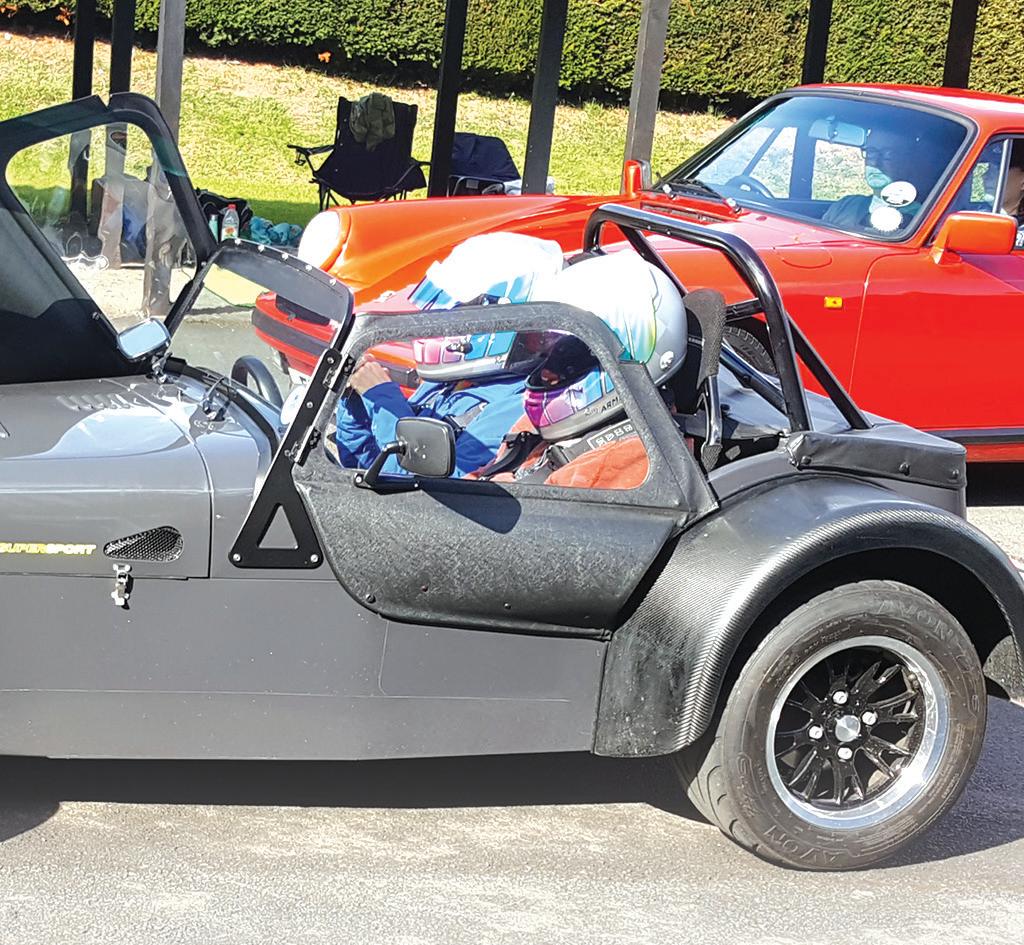
Parking up in the original narrow covered paddock bays once used by such hillclimb luminaries as Raymond Mays, Hans Stuck and Stirling Moss, the place has a great atmosphere. It’s complemented by the restored operational watermill and church in the gorgeous surroundings of the Teme Valley.
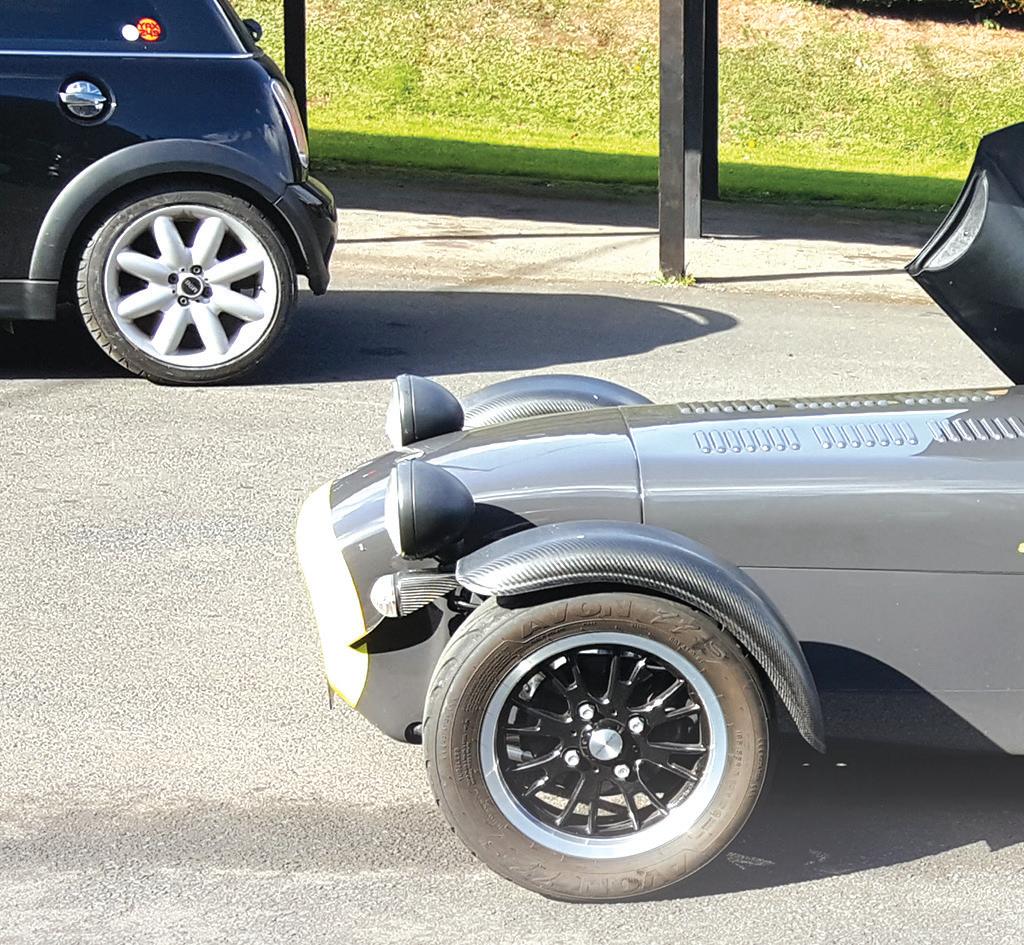
Although the event was noncompetitive, all drivers of the 24 cars taking part were giving it a go. I lined up as car three on the list on the uphill start, with the start line marshal having chocked the rear wheel to stop the car going backwards before the green light was given. The dilemma was whether to engage traction control or switch it off at the start. Turn it off and there was controlled wheelspin and a squirrelly take off, turn it on and there was a momentary hesitation as it initially controlled wheelspin, so I did three of my six runs with it on and three with it off.
Setting off a handheld stopwatch at the same time as driving the car isn’t easy and I forgot to set it on the first run which was more of a sighting opportunity. Runs two, three, four and five I managed to record times of 56-, 50s-, 48.5- and 47.2secs before unfortunately forgetting to start the watch on the final run. I would have been happy with a 46- or even 45-secs run but will never know. During the day the itinerary had provided us with breakfast bacon roll, tasty lunch followed by apple
crumble and custard, and afternoon tea and cake at the end before heading home.
A wonderful, memorable day having given the car some stick on this hillclimb championship course which will easily bite you back due to its narrowness, the damp changing camber Esses and final railway sleeper-lined flat-out section to the finish. It certainly concentrates the mind. The Esses particularly requiring respect with a squirrely back end (for me and the car), but no damage to any of the friendly participants, all of whom left with a smile on their faces and the date of 30 September, 2021 for a return visit already in the diary.



I had been slightly nervous before the start at taking on the country’s premier hillclimb venue. Now, I have even greater respect for the top championship contenders in their powerful single seaters for which the record is in the 22-secs bracket. However, I’m not too dissatisfied with my initial novice efforts in my 1.5-litre Mazda MX-5.
Russ Burton


Cynghordy
Llandovery
Carmarthenshire, SA20 0NB
Castrol’s Classic Oils are produced to original viscosities and contain the necessary anti-wear additives to provide overall protection of veteran, vintage and classic vehicles

Tel: 01550 750274
e-mail: info@cambrianway.com
Original Castrol grades:
www.cambrianway.com
XL30, XXL40, GP50, XL20w/50 R40, 10w/60 syn., EP80, EP90 ST90, EP140, D140, LS, B373
Explore some of the best roads and scenery in the UK
Castrol Classic Oils



TQD TQF, RR363, Brake Fluids Greases, Semi-Fluid greases etc

2
+44 (0)1954 231668 sales@classicoils co uk
l Small size from 500ml to Home Workshop sizesFree UK mainlandNext Day Delivery offers

2019 / 20 Club Tour Packages
Looking for a venue for your club or friends in 2019 or 2020 contact us to discuss packages and dates.
We already have 18 clubs booked in 2019 & 7 for 2020 Tours include dinner, bed & breakfast, drinks reception on 1st night, a welcome pack containing a memento of the weekend, rally plate, window sticker, Ordnance Survey Mid & South Wales road map, road books containing the route for each day & entry to a local attraction
Valvemaster™ & Valvemaster™ Plus Octane Boost Improves performance, protects against valve seat recession and fuel system corrosion Valvemaster™ Plu raises fuel by up to 2 octane Classic Valvemaster™ formerly branded as Castrol Valvemaster™


Prices from £252.50 per person for 3 night tour.
2019 ALL MAKE TOUR DATES
Open to any Make & Age of Car
5th to 8th July – 11 cars booked, 2 rooms left 5th to 8th August – 4 cars booked, 7 rooms left
Cynghordy Llandovery Carmarthenshire, SA20 0NB
Tel: 01550 750274
e-mail: info@cambrianway.com
www.cambrianway.com
Explore some of the best roads and scenery in the UK
2
Looking for a venue for your club or friends in 2019 or 2020 contact us to discuss packages and dates.


We already have 18 clubs booked in 2019 & 7 for 2020
Tours include dinner, bed & breakfast, drinks reception on 1st night, a welcome pack containing a memento of the weekend, rally plate, window sticker, Ordnance Survey Mid & South Wales road map, road books containing the route for each day & entry to a local attraction.

Prices from £252.50 per person for 3 night tour.
2019 ALL MAKE TOUR DATES
Open to any Make & Age of Car

5th to 8th July – 11 cars booked, 2 rooms left 5th to 8th August – 4 cars booked, 7 rooms left
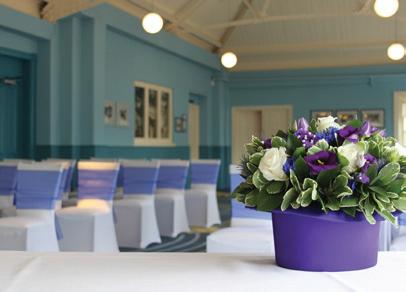


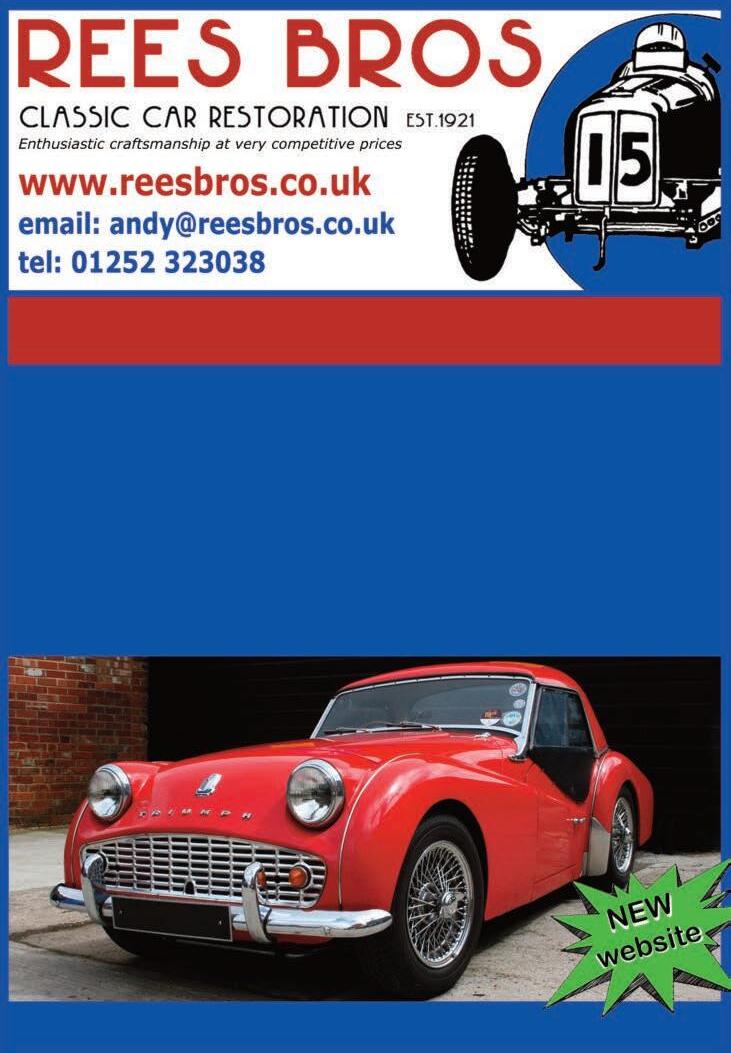


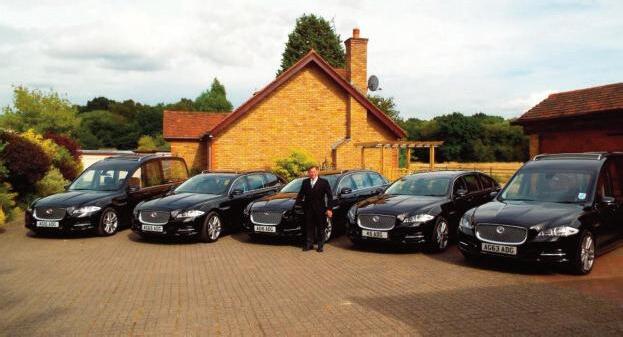














The final pre-war Bentley 4¼ Litre overdrive models were a golden end to an era for the distinguished firm and Bentley - Last of the Silent Sports Cars 1938-9 is a fitting tribute. Comprehensively updated since it was last produced 25 years ago, this new edition also comes with more chapters covering the wider aspects of the age and the cars, making it a very enjoyable read even for those with a more passing interest in the cars themselves
The core of Bentley - Last of the Silent Sports Cars 1938-9 remains the catalogue of every chassis built by Bentley during these two years. Owners have been very generous with information and detail, so the book has a lot more to offer than its predecessor. Boothman and Strang both own examples of these cars and their enthusiasm and knowledge translates to thoroughly researched writing. They also make it entertaining, so there is a light touch where some other books of this type can stray into being little more
MGs formed the backbone of much of the racing at Brooklands and remain hugely popular today. For this reason, Ross Alkureishi’s book The Complete Book of Classic MG Cars will no doubt find a willing and large audience. For those with a Brooklands bent, this book has enough pre-war coverage to make it worth the cover price of £35. It also includes some superbly reproduced images from Brooklands of racing and period adverts.
The bulk of the chapters focus on the post-war models of MG when the company was in its heyday, but it also covers the later years when the badge fell into decline before the MGF gave a flicker of hope. There are specification tables for most of the cars mentioned, which are a useful aid when reading this title.





Alkureishi’s day job as a motoring journalist shows in the clear writing style and the way the chapters are broken up with side panels on many of the rarer and more unusual models from MG’s back catalogue. For anyone keen to learn the ropes about MG, this is a very good starting point and not expensive for such a well-produced book.
Alisdair Suttie

Some of this is taken care of by Bernard King’s excellent tables, so anyone looking to research their car or buy one from this period is very well served. The book also includes plenty of period photographs, including many of these Bentley cars owned and driven by notable Brooklands characters.

Other chapters in Bentley - Last of the Silent Sports Cars 1938-9 cover the history of Bentley, contemporary press reports, and what it is like to own one of these cars today. There is even a section on the recently restored Corniche, so there’s no doubting the completeness of the effort by Strang and Boothman.


At £95, this may not be the cheapest book on Bentley, but it more than justifies the price with the superb production standards and quality of information. There is also a leather-bound limited edition version for £300. To order a copy, contact Sandra Hingston on: sandrahingston@gmail.com; or 01534 721205




 Paul Lawson
Paul Lawson
Members’ Administrator
Sarah Dover 01932 857381 ext 226 Mon-Fri members@brooklandsmuseum.com
Chairman
Neil Bailey 07970 206778 chairman@brooklandsmembers.co.uk
Secretary
Kevin Lee 01932 562246 kevin@abbeywalls.com
Tours and Trips
Angela Hume 07884 184882 Angelahume@brooklandsmembers.co.uk
Outreach
David Norfolk 01372 373929 david@davidnorfolk.wanadoo.co.uk
Talks
Steve Clarke 07860 355525 steveclarke@brooklandsmembers.co.uk
BM.tv
Mark Jarman 07710 783536 nonesuche@gmail.com
Bulletin Editor
Alisdair Suttie 07768 372440 brooklandsbulletineditor@gmail.com
Contributors
Katherine Allen, Steve Castle, Steve Clarke, Robin Cordery, Debbie Crawt, Sarah Dover, Anna Jackson, Mark Jarman, Martin Gegg, Angela Hume, Stefan Lange, Andrew Lewis, Tim Morris, Alex Patterson, John Pulford, Gareth Tarr, Julian Temple, Mike Venables
Advertising, Design and Production:
Hine Marketing, Tel: 01452 730770
Hill Farm Studios, Wainlodes Lane, Bishops
Norton Gloucestershire GL2 9LN
E-mail: nick@hinemarketing.co.uk
Address change and Bulletin distribution
queries
01932 857381 ext 226 members@brooklandsmuseum.co.uk
Brooklands Museum, Brooklands Road, Weybridge, Surrey KT13 0QN 01932 857381 Fax: 01932 855465 www.brooklandsmuseum.com
Brooklands Museum
Chairman Sir Gerald Acher CBE LVO gerryacher@brooklandsmuseum.com
CEO Tamalie Newbery ext 243
Director of Collections, Interpretation and Heritage
Alex Patterson ext 247
Visitor Experience Manager
Jenny Pettit ext 302
Volunteer & HR Manager
Aimee Nelson ext 303
Learning Officer
Laura Barclay ext 257
Curatorial and Archive Enquiries
Andrew Lewis ext 246
Chief Operating Officer
Amanda Squires ext 255
Head of Track and Air Events
Steve Castle ext 244
Concorde Bookings ext 266
flyconcorde@brooklandsmuseum.com
Hospitality Sales Manager
Joanna Rodgers ext 251 hospitality@brooklandsmuseum.com
Marketing Director
Sam Hart ext 225
Email addresses are available on the Museum website www.brooklandsmuseum.com/about/ contact-us
Long before the age of Instagram and smartphone cameras, one way of sharing photographs from race days was through sending postcards. In the collection at Brooklands Museum, we have hundreds of picture postcards which cover the entirety of the racing history of Brooklands.
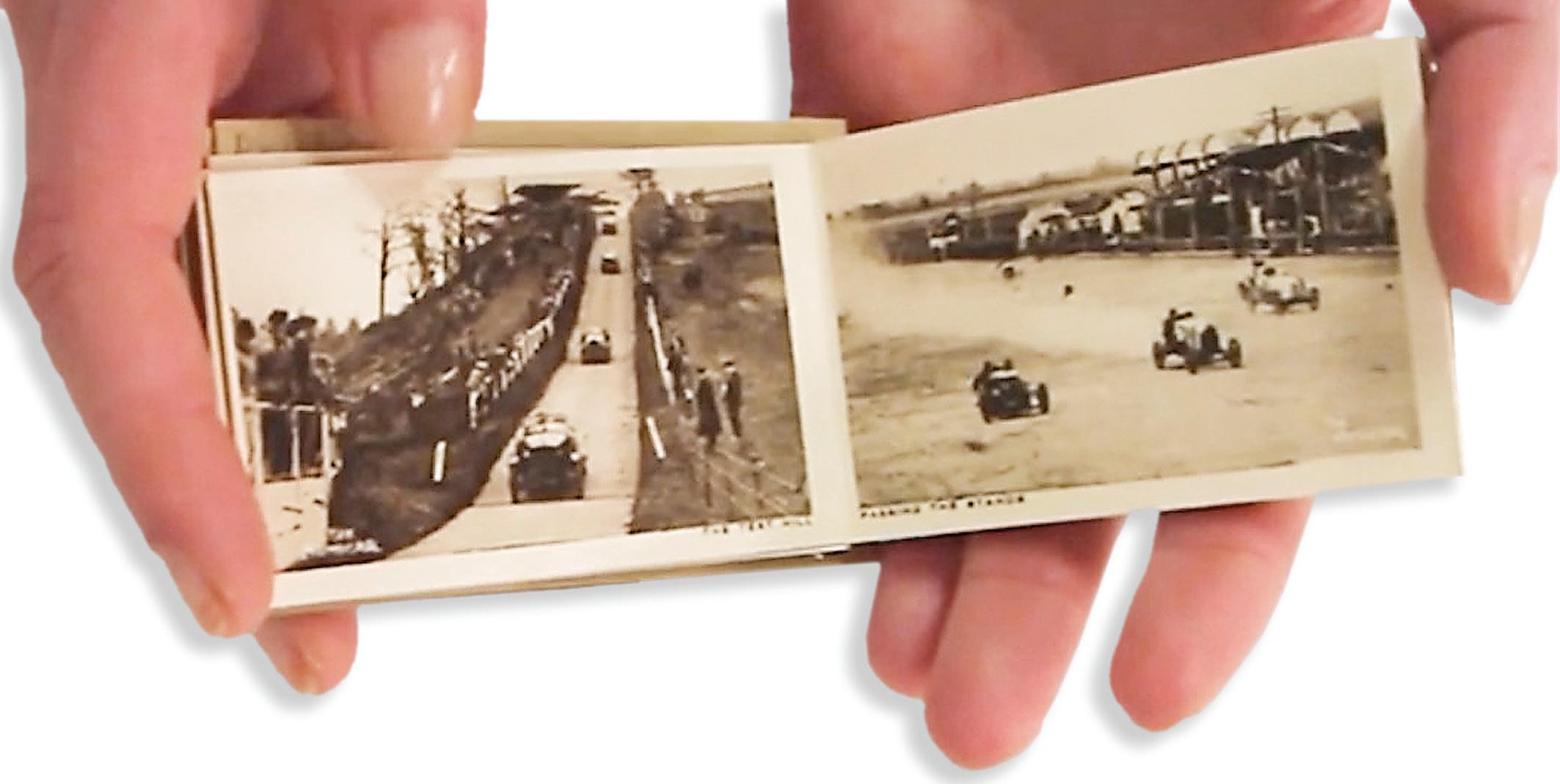
Made of printed photographs backed on to thick card, many of these postcards give a great insight into the racing highlights of the day and, in some instances, what people thought was worthy of writing home about.
Please substitue bottom left
with:
One particularly interesting element of the postcard collection is snapshot albums. These miniature albums were made of around 12 images, or gravures, in sepia or colourised. Each image was only around 7x5cm. They were sewn together to form a concertina album which can be either flicked through or extended to stand on a bookcase, mantelpiece or other surface in the home as a memento of your trip to Brooklands.
Parking arrangements
These small albums would fold neatly into a little envelope, complete with a miniature greetings card in case you wanted to send the album as a gift to someone who hadn’t been able to attend the race. As was the trend with pre-war postcards, each image included a nifty little caption, so you never forgot what you were looking at.


These souvenirs are a great source for researchers of social and motoring history, capturing the atmosphere and contemporary highlights of Brooklands.
Please note that for all events marked ‘Parking in The Heights’, designated vehicles only can enter via the Campbell Gate, off Brookland’s Road. All other Members including Club level and visitors please park in The Heights or main public car park unless otherwise specified.
Parking arrnagements for other weekend events are:
Club level Members: entry via Campbell Gate and parking outside the Paddock. Period and classic vehicles only inside the Paddock by invitation. Please abide by staff directions.
All other Members and visitors: entry via main public entrance off Brooklands Drive.
This issue of the Brooklands Bulletin (incorporating The Spirit) is published on behalf of Brooklands Members, supporters of Brooklands Museum Trust Ltd, by Hine Marketing, Hill Farm Studios, Wainlodes Lane, Bishops Norton, Gloucestershire GL2 9LN. The statements and opinions expressed in the Bulletin are not necessarily those of the Brooklands Members’ Committee or Brooklands Museum Trust Ltd.
While every effort has been made by the Publishers to include correct information, they are unable to accept responsibility for errors or omissions. The Publishers, Brooklands Members and Brooklands Museum Trust Limited cannot accept responsibility in the event of misinformation or lack of source relating to images supplied by a third party by electronic or other means.
Charity number 296661. Please quote this if making donations or requesting them via a funeral director.



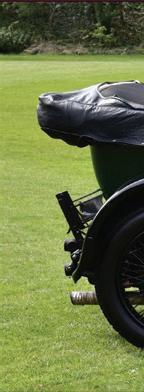













 1953 Bentley 6.5 Litre Supercharged Petersen Racer £630,000.00
1957 Bentley S1 Continental Fastback £450,000.00
1955 Bentley R type Continental Fastback £860,000.00
1953 Bentley R Type Continental Fastback £700,000.00
1922 Bentley 3/5.3 Litre With Vdp Style Coachwork £350,000.00
1953 Bentley 6.5 Litre Supercharged Petersen Racer £630,000.00
1957 Bentley S1 Continental Fastback £450,000.00
1955 Bentley R type Continental Fastback £860,000.00
1953 Bentley R Type Continental Fastback £700,000.00
1922 Bentley 3/5.3 Litre With Vdp Style Coachwork £350,000.00
